benefit corporation
description: a type of for-profit corporation that also has social or environmental goals
80 results

Reimagining Capitalism in a World on Fire
by
Rebecca Henderson
Published 27 Apr 2020
See https://benefitcorp.net/. Becoming a benefit corporation is importantly different from becoming a certified B corporation, which requires only that the firm commit to measuring itself through more than financial metrics. See https://bcorporation.net/. 80. “Benefit Corporation Reporting Requirements,” Benefit Corporation, https://benefitcorp.net/businesses/benefit-corporation-reporting-requirements. 81. “State by State Status of Legislation,” Benefit Corporation, https://benefitcorp.net/policymakers/state-by-state-status. 82. “Benefit Corporations & Certified B Corps,” Benefit Corporation, https://benefitcorp.net/businesses/benefit-corporations-and-certified-b-corps. 83.
…
I am, for example, a fan of the legal form known as the “benefit corporation.”79 Firms that incorporate as benefit corporations formally commit to creating public benefit as well as to giving decent returns to their investors. The company must publish a strategy outlining just how it is planning to do this,80 and the board has formal responsibility for making decisions that create public as well as private value. Benefit corporations must also produce an auditable report every year detailing their progress toward generating the public benefit they have promised to create. You can incorporate as a benefit corporation in thirty-six US states81—including Delaware, and there are at least 3,500 benefit corporations in operation, including Kickstarter, Patagonia, Danone, Eileen Fisher, and Seventh Generation.82 Choosing to incorporate as a benefit corporation offers a number of tangible advantages to firms hoping to make the world a better place.
…
You can incorporate as a benefit corporation in thirty-six US states81—including Delaware, and there are at least 3,500 benefit corporations in operation, including Kickstarter, Patagonia, Danone, Eileen Fisher, and Seventh Generation.82 Choosing to incorporate as a benefit corporation offers a number of tangible advantages to firms hoping to make the world a better place. It makes clear that neither the directors nor the managers have a legal responsibility to maximize shareholder value. Indeed directors are required to consider the public interest in making every decision. Most importantly, when directors have committed to sell the firm, they can select the buyer that will create the most value for all the firm’s stakeholders, rather than the one that offers current shareholders the most cash.
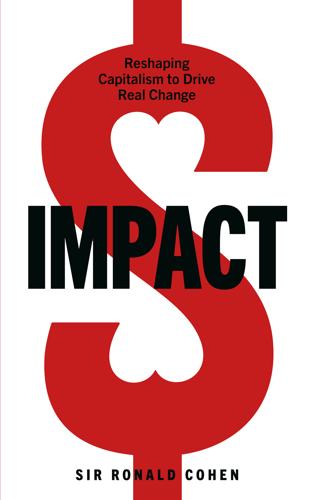
Impact: Reshaping Capitalism to Drive Real Change
by
Ronald Cohen
Published 1 Jul 2020
There are currently about 3,000 certified B Corps across 150 industries, in 64 countries – they include Patagonia, Warby Parker, Revolution Foods and Ben & Jerry’s.102 As we will see in Chapter 4, even a big company like Danone has been able to obtain certification for three of its subsidiaries – its North American division is the biggest B Corp in the world. As a result of efforts by B Lab, a new corporate form was introduced in the US in 2010: the benefit corporation. The benefit corporation’s legal form frees businesses from the obligation to maximize profit, enabling them to seek impact at the same time, without having to fear legal action by shareholders.103 Without the traditional mandate to maximize financial returns at all cost, benefit corporations are able to make decisions that reflect the interests of their workforce, community and the environment, in addition to being concerned with financial returns to shareholders.
…
The benefit corporation’s legal form frees businesses from the obligation to maximize profit, enabling them to seek impact at the same time, without having to fear legal action by shareholders.103 Without the traditional mandate to maximize financial returns at all cost, benefit corporations are able to make decisions that reflect the interests of their workforce, community and the environment, in addition to being concerned with financial returns to shareholders. It provides legal protection for acting in accordance with their moral purpose. In the United States, 34 states have already introduced benefit corporation legislation, and six more are in the process of doing so.104 By the middle of 2019, more than 5,400 benefit corporations were active in America. Patagonia and Kickstarter are examples of companies that are both certified by B Lab and incorporated as benefit corporations. A similar effort has taken place in the UK, with the introduction of Community Interest Companies (CIC) in 2005. The initiative is directed at small businesses and allows them to use their profits and assets for public good.
…
GLOSSARY Accelerator Start-up accelerators support early-stage, growth-driven companies through education, mentorship, and financing. Benefit Corporation The benefit corporation is a US legal form that frees businesses from the obligation to maximize profit, enabling them to seek impact at the same time, without having to fear legal action by shareholders. Without the traditional mandate to maximize financial returns at all cost, benefit corporations are able to make decisions that reflect the interests of their workforce, community and the environment, in addition to being concerned with financial returns.
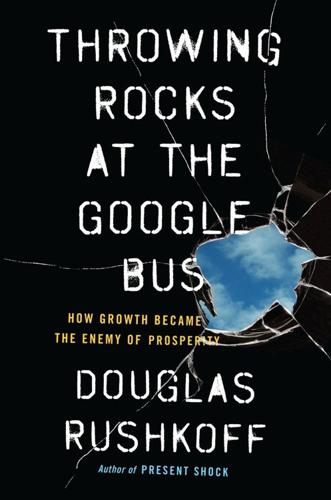
Throwing Rocks at the Google Bus: How Growth Became the Enemy of Prosperity
by
Douglas Rushkoff
Published 1 Mar 2016
Sabri Ben-Achour, “Groceries: A Low Margin Business, but Still Highly Desirable,” marketplace.org, September 12, 2013. 70. Derek Ridgway, “Flexible Purpose Corporation vs. Benefit Corporation,” hansonbridgett.com, September 4, 2012. 71. “Inc. 5000,” inc.com, September 6, 2013. 72. Ariel Schwartz, “Inside Plum Organics, the First Benefit Corporation Owned by a Public Company,” fastcoexist.com, January 22, 2014. 73. Marc Gunther, “Checking In with Plum Organics, the Only B Corp Inside a Publicly Traded Company,” theguardian.com, August 6, 2014. 74. Ridgway, “Flexible Purpose Corporation vs. Benefit Corporation.” 75. Kyle Westaway, “PROFIT + PURPOSE—Structuring Social Enterprise for Impact,” slideshare.net, March 6, 2012. 76.
…
That’s the invitation here—not to digitize the corporation with technology but to approach the corporation itself from a digital perspective of redesign. The corporation’s charter can be recoded. For example, many are toying with the “benefit corporation” as a way of tempering the emphasis on short-term and extractive profit suffered by traditional corporations goosed up on digital systems. A benefit corporation is expected to pursue profits, but that profit motive must be secondary to a stated social or environmental mission. By law, share price must take a backseat to something else, something decidedly beneficial. These corporations must develop metrics to measure social and environmental benefit based on third-party standards and then submit an annual report to government authorities confirming their compliance.70 Baby-food manufacturer Plum Organics is the largest certified B corp on the Inc. magazine list of the top 5,000 fastest-growing companies in America, coming in at number 253.71 Launched in 2007, Plum did not register as a benefit corporation until it was about to be acquired by Campbell Soup Company in 2013.
…
These corporations must develop metrics to measure social and environmental benefit based on third-party standards and then submit an annual report to government authorities confirming their compliance.70 Baby-food manufacturer Plum Organics is the largest certified B corp on the Inc. magazine list of the top 5,000 fastest-growing companies in America, coming in at number 253.71 Launched in 2007, Plum did not register as a benefit corporation until it was about to be acquired by Campbell Soup Company in 2013. Plum had always committed itself to high environmental standards and appropriate treatment of its employees, and feared losing this leeway under the stricter supervision of a conglomerate’s management and shareholders. By becoming a benefit corporation—the first to be acquired by a publicly traded company—Plum gave itself the insulation it needed from its new owner’s shareholders.72 Plum’s stated mission is to produce organic baby food using lightweight packaging, pay its lowest-earning workers at least 50 percent above the living wage, and give away at least one million pouches of food to needy children per year.73 As long as Plum remains a benefit corporation, that mission will be protected from any corporate or stockholder interference.
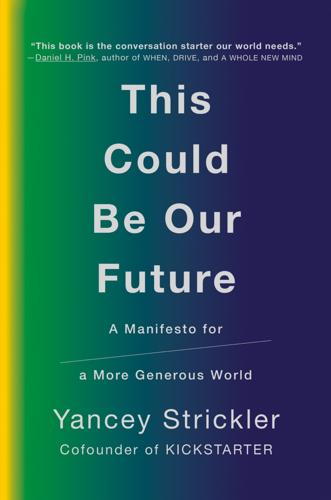
This Could Be Our Future: A Manifesto for a More Generous World
by
Yancey Strickler
Published 29 Oct 2019
But as a Future Us–maximizing decision, it makes perfect sense. This may make Patagonia sound like a charity, but it’s not. It’s a for-profit public benefit corporation with challenges and competitors just like everybody else. But Patagonia also sees the big picture. Its Now Me needs must be met, but Patagonia balances the here and now with significant investments into Future Us. * * * ■ ■ ■ ■ While not a public benefit corporation, Tesla offers another example of Future Us thinking. Not just the fact that the company makes electric cars. The way it goes about it. In 2015, Tesla announced that it was making all of its patents—the intellectual property that underlies its technology—fully public for any company to use.
…
Kickstarter began operating profitably in its fourteenth month in business. A bit more than one hundred people work out of Kickstarter’s office, an old pencil factory in Brooklyn that the company bought years ago. Kickstarter doesn’t even have a landlord. It was this same independent spirit that led Kickstarter to become a public benefit corporation (PBC). A PBC is a for-profit company that’s legally committed to balancing shareholder interests with producing a positive benefit for society. In 2015 Kickstarter became a PBC, explicitly setting higher standards for its conduct and impact. Kickstarter and Patagonia are two of the best-known companies to have made this conversion.
…
While they raised huge amounts of venture capital and set expectations for a big payday, we saw the hypergrowth path for what it was: short-term returns in exchange for long-term compromises. Our slow and steady strategy was unlike what our peers were doing. In a period of big money and fast growth, we turned our backs on how others thought about success, striving for our own ideals and goals instead, like succeeding for the long haul as a public benefit corporation. Still, there were moments when I doubted our course. Within a month of my taking over as CEO, two other companies in our space announced a combined $60 million in funding from top venture capitalists aiming to take us on. It was a gut-check moment. Should we do the same? We stuck to our course and the moment passed.
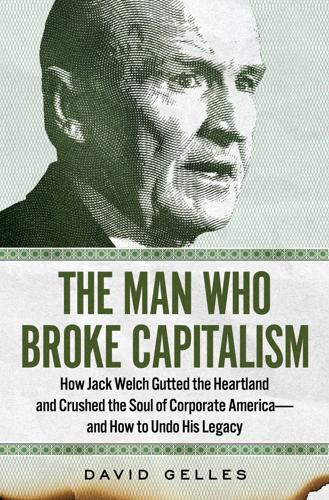
The Man Who Broke Capitalism: How Jack Welch Gutted the Heartland and Crushed the Soul of Corporate America—and How to Undo His Legacy
by
David Gelles
Published 30 May 2022
Thanks in part to the B Corp movement, there is now a new way for companies to incorporate themselves in the United States: the public benefit corporation. While most for-profit companies are organized as so-called C Corporations, with bylaws that simply state directors and executives must do what’s in “the best interest of the corporation” without actually defining what that means, the charters of public benefit corporations are unambiguous. Included in their bylaws are explicit commitments to have a positive influence on society, and to take care of workers, the environment, and communities. Maryland became the first state to allow public benefit corporations in 2010, and a decade later almost every state has passed laws that enable companies to choose this path.
…
Now He Wants to Reinvent Capitalism,” New York Times, August 29, 2019, https://www.nytimes.com/2019/08/29/business/paul-polman-unilever-corner-office.html. “Our mission as”: Dan Schulman, in discussion with the author, 2021. “Benefit Corporation legislation”: Elissa Loughman, “Benefit Corporation Update: Patagonia Passes B Impact Assessment, Improves Score to 116,” Patagonia.com, https://www.patagonia.com/stories/benefit-corporation-update-patagonia-passes-b-impact-assessment-improves-score-to-116/story-17871.html. “It concerns us that”: Lazonick, Profits Without Prosperity. “Society is demanding”: Larry Fink, “A Sense of Purpose,” Harvard Law School Forum on Corporate Governance, January 17, 2018, https://corpgov.law.harvard.edu/2018/01/17/a-sense-of-purpose/.
…
By writing a more expansive set of priorities into their governing documents, executives are at once codifying their values and rebuking the notion that they are obliged to maximize its short-term profits. As Patagonia founder Yvon Chouinard said when his company made the transition to public benefit corporation, “Benefit Corporation legislation creates the legal framework to enable mission-driven companies like Patagonia to stay mission-driven through succession, capital raises, and even changes in ownership, by institutionalizing the values, culture, processes, and high standards put in place by founding entrepreneurs.”
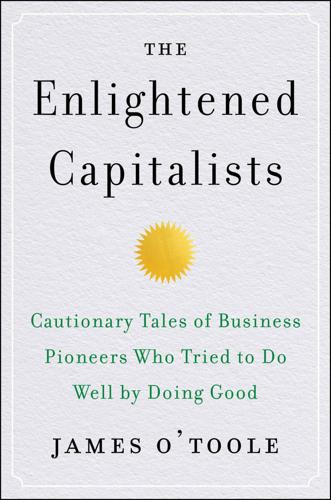
The Enlightened Capitalists
by
James O'Toole
Published 29 Dec 2018
Ryan Honeyman, the author of The B Corp Handbook, explains that “in a time of crisis, such as the recent financial collapse, or under a leadership change, social and environmental values can get pushed aside if they are not embedded in the company’s legal structure. The benefit corporation legal structure provides entrepreneurs, owners, and investors with the assurance that the company’s social and environmental values will remain equally important to making a profit—no matter what.”24 The advent of benefit corporations leads one to speculate that the sad, bad ends experienced at many companies reviewed in this book might have been happier if they had had the option of becoming benefit corporations. Nonetheless, the emergence of benefit corporations cannot be taken as an indicator of a positive future for enlightened corporate leadership; after all, the designation was created to shield virtuous businesses from the grasp of publicly traded acquirers.
…
His friend and fellow environmentalist Tom Brokaw quotes Chouinard as saying, “I don’t want a Wall Street greaseball running my company.”13 It is thus consistent with Chouinard’s beliefs that Patagonia would become the first company in California to apply to the state for “benefit corporation” status. As explained in chapter 18, twenty-seven American states grant benefit corporation charters that allow companies to be legally structured so that their officers and directors are permitted to make decisions benefiting society, even if those actions are not in the immediate interest of shareholders. Thus, at least theoretically, benefit status shields socially engaged companies from the threat of activist shareholder suits based on the doctrine of shareholder primacy.
…
We concluded that the movement’s “creation of a common ground for progressives and libertarians is no mean feat” and its “creative squaring of the circle was why the movement is increasingly seen as so attractive.”20 In sum, CC and other business consortia are positive omens, but their influence is limited to the like-minded, and they are unlikely to change the practices of investor capitalism that threaten the cultures of enlightened companies. Trend Four: Social Entrepreneurship and Benefit Corporations Conscious Capitalism is closely related to two other movements that gladden my idealistic heart: social entrepreneurship and benefit corporations. Recent years have witnessed the rapid growth of “social enterprises,” an increasing number of which are for-profit businesses (such as Daniel Lubetzky’s KIND), although many are not. The term social entrepreneur appears to have been coined by American Bill Drayton, founder of Ashoka, an organization that supports over three thousand such individuals in ninety-some-odd nations.
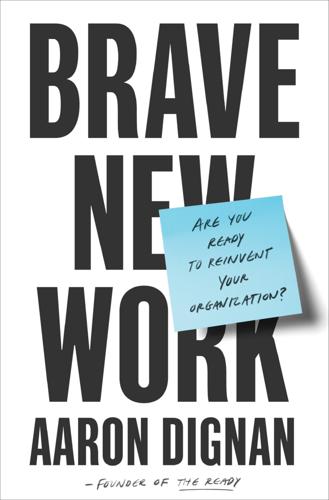
Brave New Work: Are You Ready to Reinvent Your Organization?
by
Aaron Dignan
Published 1 Feb 2019
Nonprofits are purpose driven, but they lack the means and motivation to engage in critical fields such as technology, energy, healthcare, transportation, and infrastructure in a meaningful way. The public benefit corporation promises the best of both worlds: purpose and profit, scale and impact. As of this writing, thirty-four U.S. states have already passed legislation enabling this form of incorporation, and more are following suit. Some of the most progressive organizations around have already taken the leap and become public benefit corporations, including Method, Kickstarter, Plum Organics, Patagonia, and Danone North America. Good company. While public benefit corporations represent a legal innovation, Certified B Corporations represent an operational one.
…
Barring any regulations that stand in the way, corporate leadership is obligated to pollute the environment if it will provide immediate gains to shareholders, even if those shareholders will eventually drink that water or breathe that air. When it comes to their legal mandate, there’s no room for purpose beyond profit. But that’s all about to change. Enter the public benefit corporation, a relatively new form of incorporation that allows an organization to prioritize a purpose or mission—beyond profit—that provides a benefit to society. By encoding this right and responsibility into the legal structure of the business itself, the public benefit corporation allows an organization to protect and nurture its mission, even as a publicly traded company. This fills a gap that has long existed between for-profit and nonprofit organizations.
…
While public benefit corporations represent a legal innovation, Certified B Corporations represent an operational one. B Lab, the nonprofit that developed and promotes the model legislation for public benefit corporations, is also the creator of a set of standards for social impact that make it more tangible and measurable. The idea here is to move from intentions to outcomes. Not just what an organization values, but what it does. To become a Certified B Corporation, an organization must take the B Impact Assessment, which measures impact areas such as governance, workers, community, and environment, from the perspective of both operations and the underlying business model. Applicants that achieve an impact score above a certain threshold are certified, authorized to use the Certified B Corporation language and logo, and join a community of more than 2,600 organizations that represent sixty countries and more than 150 industries.

WTF?: What's the Future and Why It's Up to Us
by
Tim O'Reilly
Published 9 Oct 2017
Kickstarter has gone so far as to register as a public benefit corporation, a designation that places a legal requirement on the company to consider its impact on society and not just on shareholders. Kickstarter’s founders told their venture capital investors from the start that they have no plan to exit, and have instead put in place a mechanism for making regular cash distributions to their shareholders, just like Basecamp and the indie.vc companies. An aside: I’ve always had mixed feelings about public benefit corporations and their lighter-weight cousins, benefit corporations, or B corps, which certify to their investors that they do take factors other than shareholder value into account, but are not legally required to do so.
…
But it Should Be,” Money Talking, WNYC, January 16, 2015, http://www.wnyc.org/story/failure-not-an-option-but-it-should-be/. 286 Three had no investment at all from VCs: Bryce Roberts, “Helluva Lifestyle Business You Got There,” Medium, January 31, 2017, https://medium.com/strong-words/helluva-lifestyle-business-you-got-there-e1ebd3104a95. 286 which he called indie.vc: Bryce Roberts, “We Invest in Real Businesses,” indie.vc, retrieved April 3, 2017, http://www.indie.vc. 287 tens of millions in distribution: Jason Fried, “Jason Fried on Valuations, Basecamp, and Why He’s No Longer Poking the World in the Eye,” interview with Mixergy, April 4, 2016, https://mixergy.com/interviews/basecamp-with-jason-fried/. 287 “if growth is not immediate and meteoric”: Marc Hedlund, “Indie.vc, and focus,” Skyliner (blog), December 14, 2016, https://blog.skyliner.io/indie-vc-and-focus-8e833d8680d4. 289 “faster than any company in Silicon Valley”: Hank Green, “Introducing the Internet Creators Guild,” June 15, 2016, https://medium.com/internet-creators-guild/introducing-the-internet-creators-guild-e0db6867e0c3. 290 at the Vatican in November 2016: Fortune +Time Global Forum 2016, “The 21st Century Challenge: Forging a New Social Compact,” Rome and Vatican City, December 2–3, 2016, http://www.fortuneconferences.com/wp-content/uploads/2016/12/Fortune-Time-Global-Forum-2016-Working-Group-Solutions. pdf. 290 by $165 billion: Google, Economic Im-pact, United States 2015, retrieved Dec-ember 12, 2016, https://economicimpact. google.com/#/. 290 more than 60% of their traffic came from search: Nathan Safran, “Organic Search Is Actually Responsible for 64% of Your Web Traffic (Thought Experiment),” July 10, 2014, https://www.conductor.com/blog/2014/07/organic-search-actually-responsible-64-web-traffic/. 291 commissioned a report: Yancey Strickler, “Kickstarter’s Impact on the Creative Economy,” The Kickstarter Blog, July 28, 2016, https://www.kickstarter.com/blog/kickstarters-impact-on-the-creative-economy. 291 have gone on to great success: Amy Feldman, “Ten of the Most Successful Companies Built on Kickstarter,” Forbes, April 14, 2016, https://www.forbes.com/sites/amyfeldman/2016/04/14/ten-of-the-most-successful-companies-built-on-kickstarter/#4dec455f69e8. 292 register as a public benefit corporation: Yancey Strickler, Perry Chen, and Charles Adler, “Kickstarter Is Now a Benefit Corporation,” The Kickstarter Blog, September 21, 2015, https://www.kick starter.com/blog/kickstarter-is-now-a-benefit-corporation. 292 regular cash distributions to their shareholders: Joshua Brustein, “Kickstarter Just Did Something Tech Startups Never Do: It Paid a Dividend,” Bloomberg, June 17, 2016, https://www.bloomberg.com/news/articles/2016-06-17/kickstarter-just-did-something-tech-startups-never-do-it-paid-a-dividend. 292 shareholder value primacy has no legal basis: Lynn Stout, The Shareholder Value Myth (San Francisco: Berrett-Koehler, 2012). 292 argues otherwise: Leo E.
…
And given that most US corporations are registered under Delaware law, Strine’s views carry more legal weight. Frankly, though, if there is legal precedent for the corporate obligation to disregard the interests of all but shareholders, I’d like to see it challenged and overturned. Etsy, the marketplace for handmade goods, is also a benefit corporation, mindful of the benefits to its sellers. “Etsy sellers personify a new paradigm for business,” Etsy’s economic impact report announces. “For many years, the conventional and dominant retail model has prioritized delivering goods at the lowest possible price and growth at any cost. . . . In many ways, Etsy sellers represent a new approach to business, where autonomy and independence matter just as much as, if not more than, the bottom line.”
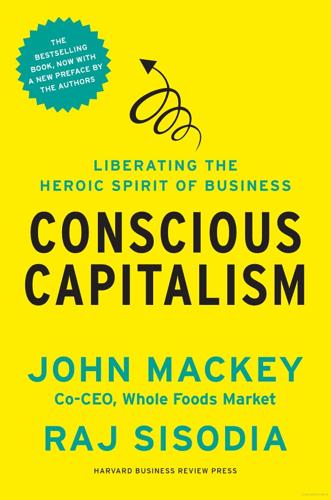
Conscious Capitalism, With a New Preface by the Authors: Liberating the Heroic Spirit of Business
by
John Mackey
,
Rajendra Sisodia
and
Bill George
Published 7 Jan 2014
B Corporations In the last few years, a new corporate form has come into being: B corporations, or benefit corporations. B corporations adopt charters that explicitly address social and environmental problems. These companies are certified by a nonprofit organization called B Lab, which ensures that they are legally accountable for meeting defined social and environmental performance standards. An estimated 450 small to midsize companies have received this certification as of this writing, and seven states have passed legislation permitting companies to incorporate as benefit corporations. By mutual agreement, certified companies receive discounts when transacting with other certified companies.7 Although B corporations are compatible with the tenets of Conscious Capitalism, we do not see them as a revolutionary advance.
…
Jones, “Americans Most Confident in Military, Least in Congress,” Gallup Politics, June 23, 2011, www.gallup.com/poll/148163/Americans-Confident-Military-Least-Congress.aspx. 12. The B (or Benefit) Corporation movement is largely predicated on this belief. It seeks to create a special mode of incorporation that permits companies to explicitly seek to create societal benefits and consider the interests of all their stakeholders, in addition to creating wealth for shareholders. Companies also are required to report on their social and environmental performance using independent standards. Nine U.S. states have passed Benefit Corporation legislation as of July 13, 2012, and bills have been introduced in six others.
…
There is nothing wrong with any corporation’s setting itself up as a B corporation if that is what the founders wish to do and if they can find investors who willingly agree to the terms of the B corporation and the apparent relinquishing of their legal rights as owners to the power of management. Benefit corporations are perfectly consistent with capitalism as a type of voluntary organization that creates value for its stakeholders in proportions different from those used by ordinary corporations. However, B corporations fall far short of being revolutionary, because they will likely be only a relatively small niche in the greater capitalistic universe.

The Raging 2020s: Companies, Countries, People - and the Fight for Our Future
by
Alec Ross
Published 13 Sep 2021
Most people do not realize the wastefulness of their wardrobes, but at its current growth rate, the fashion industry will produce a quarter of the world’s carbon emissions by the year 2050. Some brands do not mind cashing in on humanity’s shopping sprees, but others have pioneered a more sustainable approach to clothing their customers. Prominent among them is Patagonia. Patagonia is a benefit corporation, a relatively new class of company that aims to serve the public good as well as turn a profit. It was the first “B Corp” in California. The legal purpose of a benefit corporation designation is to provide cover for board members and executives to make decisions that may not maximize shareholder value over the short term, but create public benefit and sustainable value in addition to generating profits.
…
It might sound ridiculous to have to establish that kind of legal cover, but after my friend Craig Newmark sold his website Craigslist to eBay, eBay actually sued him—and won—with a finding in court that any nonfinancial mission that “seeks not to maximize the economic value of a for-profit” for its shareholders is inconsistent with directors’ duties, and therefore against the law. As sad as it is that it’s necessary, a benefit corporation designation allows a company to serve stakeholders without fear of a similar ruling—and to go further by establishing an obligation to stakeholders within the company’s mission. The environment has been a stakeholder in Patagonia’s business model for decades. The company’s founder, American rock climber Yvon Chouinard, is an icon among outdoors enthusiasts and environmentalists.
…
Today, Stanley’s official title is director of philosophy, a role that lets him serve as the de facto caretaker of the Patagonia ethos (“we didn’t know what else to call me,” he said). He trains employees on the company’s history and values, advises student entrepreneurs at Yale, and evangelizes for benefit corporations. A soft-spoken poet with high cheekbones and a grandfatherly demeanor, Stanley puts you at ease the minute he introduces himself. Though Patagonia was born in the outdoors, the company did not always see itself as a protagonist in the effort to protect the environment. “In the early seventies, I think our conception was that anything to do with environmental protection was the business of the government,” Stanley said.
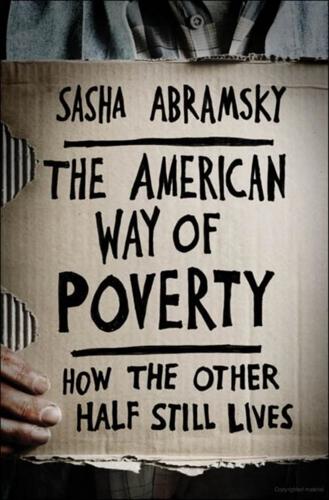
The American Way of Poverty: How the Other Half Still Lives
by
Sasha Abramsky
Published 15 Mar 2013
And, to round out the circle, Focus: HOPE had recently sold some of its buildings to manufacturing companies that had come into the area and in exchange hired on Focus: HOPE graduates. Step by step, a part of the city long given up on by the powers-that-be was coming back to life. Around the country, businesses were being developed with precisely this sort of community-building raison d’être. Increasingly, they were codifying these missions, using so-called Benefit Corporation Statutes—as of mid-2012 on the books in Illinois, Louisiana, Maryland, New Jersey, Vermont, and Virginia, and talked about in several other states. What are these statutes? They are essentially state laws that protect businesses with a proven commitment to social justice—to environmental sensitivity in their practices, to decent pay for workers, to the provision of affordable housing, and to concern for the communities in which they operate—from being sued for not maximizing their profits.
…
Accept a buyout offer from a company offering less than a rival but guaranteeing to, say, keep your workers’ pensions and other benefits intact; again, there’s always that risk the courts will find you liable for your investors’ losses. Write a social justice mission into your business’s articles of incorporation, however; qualify it as a benefit corporation; submit to third-party evaluation from the Pennsylvania-based B Lab nonprofit organization episodically to make sure your company is maintaining its progressive commitments; and that risk dissipates. Put simply, it gives businesses, otherwise operating in a cutthroat economic environment, legal cover to do the right thing.
…
Put simply, it gives businesses, otherwise operating in a cutthroat economic environment, legal cover to do the right thing. That’s why National People’s Action and other activist groups have championed these laws. And it’s why expanding the number of states using such legislation ought to be a core part of our expanded War on Poverty. As of September 2012, B Lab listed 603 benefit corporations nationwide, with total revenues of more than $4 billion.15 That was, however, just the tip of the iceberg. A couple months earlier, Forbes magazine had estimated that there were at least 50,000 companies nationwide with the sorts of social justice commitments protected by the statutes.16 Harness that energy, provide the companies with legal protections behind which they can pursue goals other than simply maximizing their profits, and you fill in one more gigantic piece in the anti-poverty puzzle.

The Sharing Economy: The End of Employment and the Rise of Crowd-Based Capitalism
by
Arun Sundararajan
Published 12 May 2016
. … This is a part of California corporate law that allows you to set up a corporation and essentially say that your mission is your top priority and you can make a choice that would be noneconomic in favor of your mission and your directors wouldn’t be able to fire you for that or your shareholders wouldn’t be able to sue you for that, which is a basic protection for the organization.33 Werbach then went on to discuss how he raised a seed round of financing successfully, but people around him felt he would face significant challenges raising his next round of financing as a benefit corporation. Yerdle was eventually funded by the Westly Group (an investor in Honest Buildings, another benefit corporation), and has since also received additional funding from traditional venture capital investors, but his experience highlights the barriers entrepreneurs perceive to structuring themselves as anything other than a traditional corporation. In many ways, these fundraising challenges echo those raised by OuiShare co-founder Benjamin Tincq.
…
However, even if the project is a commercial venture, investing in a Kickstarter gives you no ownership stake. I spoke to Kickstarter’s founder and CEO Yancey Strickler about this in spring 2014, and at the time he asserted that he had no intention of taking the platform into the “capital for equity” realm. In fact, late in 2015, the company reaffirmed its position by becoming a benefit corporation, renewing its longstanding commitment to supporting the arts and culture, and articulating other values and commitments it intended to live by.43 If one looks at the composition of projects funded on Kickstarter, some of the “gift” motivations become clearer. A large percentage of Kickstarter projects are those that would have traditionally been funded by a foundation or a wealthy local business looking to support the arts, or through a charity walk, or by a group of friends.
…
Hyde describes how anthropologist Bronislaw Malinowski spent several years living on these islands during World War I, eventually mapping out how the circles associated with the flow of armshells and necklaces across people spanned many adjoining islands. 38. Hyde, The Gift, 24, 48, 24. 39. Benkler, “‘Sharing Nicely,’” 316. 40. Hyde, The Gift, 47. 41. Ibid., xxi–xxii. 42. Ibid., xvii. 43. See https://www.kickstarter.com/blog/kickstarter-is-now-a-benefit-corporation. 44. http://tradeschool.coop. 45. Natalie Foster, “It’s Time for CPUC to OK Ride Shares,” SFGate, September 13, 2013, http://www.sfgate.com/opinion/openforum/article/It-s-time-for-CPUC-to-OK-ride-shares-4825997.php. 46. http://steinhardt.nyu.edu/pach/. 47. Sherry Turkle, Alone Together: Why We Expect More from Technology and Less from Each Other (New York: Basic Books, 2011). 1. 48.

The Zero Marginal Cost Society: The Internet of Things, the Collaborative Commons, and the Eclipse of Capitalism
by
Jeremy Rifkin
Published 31 Mar 2014
From the perspective of their architectural design and operating protocols, they are best positioned to bridge the gap between the two economies and find value at the edges where potential synergies arise. In the United States, the “benefit corporation” is an interesting new business model that’s attempting a makeover of the conventional capitalist corporation to allow it to be more agile and able to maneuver in the hybrid world of markets and Commons. Patagonia, the California-based global sports clothier, with annual sales around $540 million, is the most prominent company to date to make the switch to a benefit corporation.29 Benefit corporations, which are now recognized and regulated as legal entities in 18 U.S. states, offer entrepreneurs a form of legal protection against outside investors who might force them to give up their social or environmental commitments in return for new financing.30 Although benefit corporations operate as capitalist companies and are responsible to their shareholders, their new legal status enables them to put their social and environmental mandates up front without risking the wrath of investors interested only in optimizing shareholder value.
…
Patagonia, the California-based global sports clothier, with annual sales around $540 million, is the most prominent company to date to make the switch to a benefit corporation.29 Benefit corporations, which are now recognized and regulated as legal entities in 18 U.S. states, offer entrepreneurs a form of legal protection against outside investors who might force them to give up their social or environmental commitments in return for new financing.30 Although benefit corporations operate as capitalist companies and are responsible to their shareholders, their new legal status enables them to put their social and environmental mandates up front without risking the wrath of investors interested only in optimizing shareholder value. The benefit corporation is part of a larger wave loosely defined under the rubric of social entrepreneurialism that’s captured the imagination of a younger generation coming out of business schools around the world.
…
Yet there is a continuum that connects purely charitable capital at one extreme and for-profit capital at the other, with various trade-offs between risk, return and social impact in between. Much of the discussion . . . is expected to focus on that continuum and to figure out, for any given social goal, which sort of social capital, or mix of different sorts of it, is most likely to succeed.33 For example, while the benefit corporation is an attempt to modify the profit-making drive of capitalist firms to edge closer to the social and environmental priorities of nonprofits in the social Commons, nonprofit organizations are making their own modifications, edging closer to the profit orientation of capitalist firms. Nine states in the United States—Illinois, Maine, Rhode Island, Michigan, Louisiana, Wyoming, North Carolina, Vermont, and Utah—have enacted what are called L3C laws.
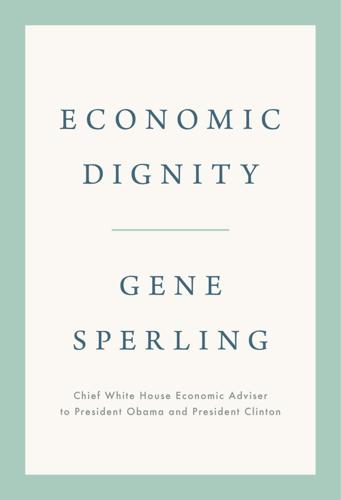
Economic Dignity
by
Gene Sperling
Published 14 Sep 2020
Strine, “The Dangers of Denial: The Need for a Clear-Eyed Understanding of the Power and Accountability Structure Established by the Delaware General Corporation Law” (Institute for Law and Economics Research Paper No. 15-08, University of Pennsylvania Law School, Philadelphia, PA, March 2015): 20, https://ssrn.com/abstract=2576389. 32. eBay Domestic Holdings v. Newmark, 16 A.3d 1 (Del. Ch. 2010); Strine, “The Dangers of Denial,” 18. 33. “Why Pass Benefit Corporation Legislation,” Benefit Corporation, https://benefitcorp.net/policymakers/why-pass-benefit-corporation-legislation; see “About B Lab,” https://bcorporation.net/about-b-lab. 34. Of course, there is also a larger literature about the negative impacts of the trend favoring stock-based executive compensation models. Many observers have noted that these compensation structures reward a relatively short-term focus on share prices, exacerbating the overall mentality of privileging shareholder wealth above all else.
…
If members of the Business Roundtable want to show their seriousness about a stakeholder value standard, they should start by pushing for legislative changes to ensure those who seek to promote the economic dignity of their employees will not risk legal action for a failure to fulfill their fiduciary duty. They could also change their corporate structures to become “benefit corporations.” At least thirty-two states and Washington, DC, have created the “benefit” or “B Corporation” category, which gives corporate directors the leeway to legally declare their purposes as being beyond the sole aim of enriching stockholders as advocated for by groups like B Lab.33 Benefit corporation legislation is the kind of government structuring of markets that adheres to the rule of not punishing corporate actors that are driven to put economic dignity at the pinnacle of their corporate aspirations.
…
See Affordable Care Act ACCO Office Supplies, 35 Acemoglu, Daron, 146–47, 148–49 “activity gap,” 286–88 ACT/SAT test gap, 277, 289–90 ACT/SAT test prep, 42–43, 289 Adams, James Truslow, 45 Advanced Research Projects Agency–Energy (ARPA-E), 99 Affordable Care Act (ACA), xiii–xiv, xvi, 26, 132, 166–67, 189 health-care navigators, 212–13 Medicaid expansion, 40, 93 for people with disabilities, 200 preexisting conditions, 97, 100, 101, 103, 166–67, 356 Republican efforts to undermine, 97, 166–67, 329–30n subsidies, 100, 167, 187, 329 AFL-CIO, 77, 123, 250, 282 African Americans civil rights, xvii–xviii, 14–15, 24–25, 73–74, 244–45 criminal justice inequality, 53–54, 58 denial of full rights, xvii–xviii, 16, 154–55 economic inequality and, 47–48, 203, 245 education inequality, 42–43, 46–48, 273, 275, 286–87 health inequality, 41, 61 Jim Crow laws, 63, 284, 293 life expectancy, 60–61 racism and maternal mortality, 61 after-school programs, 216–17, 286–88 Age Discrimination in Employment Act, 260 “agency problem,” 120–21 Agricultural Labor Relations Act (ALRA) of 1975, 76, 256 Agricultural Workers Association, 76 Alaska, Permanent Fund Dividend (PFD), 188–89 Alexander, Michelle, 293 Alliance of Motion Picture and Television Producers, 258–59 Alstott, Anne, 104–5 Altiraifi, Azza, 198 Altman, Nancy, 188 Amazon, 117, 125, 236 warehouse workers, 82, 237 “Amazon’s Antitrust Paradox” (Khan), 84 American Dilemma, An (Myrdal), 16 American Dream, 42, 45 American Enterprise Institute (AEI), 11, 97, 100, 163 American Federation of Labor, 82 American Federation of Teachers, 251 American Recovery and Reinvestment Act of 2009, 221, 266–67 Americans for Tax Reform, 90 AmeriCorps, 220 Anderson, Elizabeth, 64, 244 Andrias, Kate, 258 anti-immigrant rhetoric, 291, 294, 296 antitrust, 23, 83–84, 114–16 Appelbaum, Binyamin, 119, 135 Apple, 230, 232–33, 244 Apple App Store, 117 apprenticeship programs, 138–39, 280, 281, 282, 296 arbitration agreements, 259–60, 267 ARC, The, 199–200, 211 Arizona, school counselor ratio, 209 artificial intelligence (AI), 128–29, 136, 139, 146–50, 205, 206 Asbed, Greg, 256 Asian American environmental racism, 41 Atlanta washerwomen strike, 73 Auguste, Byron, 283–84 autism, 194–200, 210–12 Autistic Self Advocacy Network, 196–97 automation, 128–29, 136, 139, 146–50 automobile industry, 127, 130, 137–38, 139–40, 250 autonomous vehicles, 128, 143, 148, 169, 171, 205 autonomy and voice, 17–19, 39, 64, 69, 154, 229, 238, 250 see also meaningful work and self-employed workers Autor, David, 129, 270 average incomes, 7 Baker, Dean, 134, 267 Balleisen, Edward, 49 Banerjee, Abhijit, 129 Barkan, Ady, 266 Barrett, Tom, 57–58 Barrington-Ward, Jenner, 52 Barro, Josh, 32 Bartik, Tim, 273 Bascom, Julia, 196–97 Bearden v. Georgia, 57–58 behavioral therapy, 211–12 Belgium, unemployment benefits, 131–32 “benefit corporation,” 120 Benitez, Lucas, 256 Bentele, Keith, 267 bereavement leave, 36–37, 233 Berlin, Isaiah, 16 Bernanke, Ben, 52 Bernstein, Jared, 191, 267 Biden, Jill, 214 Biden, Joe, 15, 163 Detroit bankruptcy, federal response, 138 Bidwell, Matthew, 233 Bill of Rights, 16–17 B Lab, 120 Blake, Robert, 128 Blinder, Alan, 128 blue sky research, 99 Boeing, 249–50 Bogenschneider, Bret, 150 Bolden, Dorothy, 72, 73–74, 257 Booker, Cory, 15, 163 Boushey, Heather, 8 Bowie, Norman, 224 Brandeis, Louis, 115 Brennan, William J., Jr., 17 Brooks, Arthur C., 163, 164–65, 170, 171 Brown, Sherrod, 15, 163 Browning, Elizabeth Barrett, 97 Brown v.

Empire of AI: Dreams and Nightmares in Sam Altman's OpenAI
by
Karen Hao
Published 19 May 2025
GO TO NOTE REFERENCE IN TEXT On Altman’s list: Amir Efrati and Wayne Ma, “OpenAI CEO Cements Control as He Secures Apple Deal,” The Information, May 29, 2024, theinformation.com/articles/openai-ceo-cements-control-as-he-secures-apple-deal. GO TO NOTE REFERENCE IN TEXT Altman was considering: Aaron Holmes, Natasha Mascarenhas, and Julia Hornstein, “OpenAI CEO Says Company Could Become Benefit Corporation Akin to Rivals Anthropic, xAI,” The Information, June 14, 2024, theinformation.com/articles/openai-ceo-says-company-could-become-benefit-corporation-akin-to-rivals-anthropic-xai. GO TO NOTE REFERENCE IN TEXT On June 4, The New York Times: Kevin Roose, “OpenAI Insiders Warn of a ‘Reckless’ Race for Dominance,” New York Times, June 4, 2024, nytimes.com/2024/06/04/technology/openai-culture-whistleblowers.html.
…
Behind the scenes, Altman began searching for funding alternatives and to wean off OpenAI’s dependency on Musk. He called Reid Hoffman, who offered to step in and hold down employee salaries and operational costs. He considered launching a new cryptocurrency. He investigated an array of different corporate structures, including a public benefit corporation, which Musk had been keen on and would allow OpenAI to become a for-profit while still legally binding it to its mission. Compounding the urgency was an ever-present worry that OpenAI could lose its best researchers at any moment. Previously, with Musk’s firm backing, OpenAI had aggressively cranked up its nonprofit salaries to ward off counteroffers.
…
Professionals were hired, and Brockman began bankrolling them in part with his own money. All the while, Altman fleshed out the plan for raising money. After considering a variety of for-profit structures, he landed on an unusual proposal to balance the need for capital with a continued commitment to OpenAI’s mission. While benefit corporations had a built-in mechanism for maintaining this balance, they also came with too many other rules. Instead, Altman would create a limited partnership, or LP, to act as a for-profit arm for receiving investment and commercializing OpenAI’s technologies. That arm would place a ceiling on investors’ returns and be governed by OpenAI’s nonprofit.
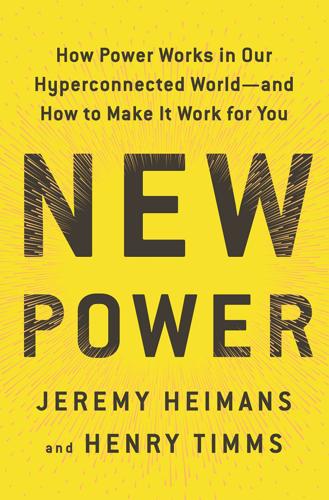
New Power: How Power Works in Our Hyperconnected World--And How to Make It Work for You
by
Jeremy Heimans
and
Henry Timms
Published 2 Apr 2018
“I’m thrilled that you’re writing”: Yochai Benkler, discussion with authors, December 2, 2016. “What’s interesting is that if you teach”: Ibid. “Benkler’s dream”: Benkler, “Carr-Benkler Wager Revisited.” “Kickstarter is not a store”: Strickler, Chen, and Adler, “Kickstarter Is Not a Store.” “public benefit corporation”: Yancey Strickler, Perry Chen, and Charles Adler, “Kickstarter Is Now a Benefit Corporation,” Kickstarter (blog), September 21, 2015. www.kickstarter.com. Kickstarter’s charter boldly: “Charter,” July 2017. www.kickstarter.com. “We told people”: Perry Chen, discussion with authors, March 10, 2017. A study at the University of Pennsylvania: University of Pennsylvania Wharton School of Business, “Wharton Crowdfunding Study,” July 2017. www.crowdfunding.wharton.upenn.edu.
…
In a famous blog post in 2012, as the platform was reaching scale and becoming a cultural touchstone, the founders declared “Kickstarter is not a store,” and introduced measures to steer the site away from simply becoming a way to preorder a product. Perry decided not to sell Kickstarter or take it public, but to turn it into a “public benefit corporation”—an emerging corporate and legal structure that binds the company to serve society, not just its shareholders (building on the idea behind B Corporations [B Corps], a voluntary certification for socially responsible businesses). Kickstarter’s charter boldly, and in plain English, paints a picture of a very different kind of new power behemoth: • Kickstarter will care for the health of its ecosystem and integrity of its systems
…
The dominant early contributions: Anthony Cuthbertson, “Reddit Place: The Internet’s Best Experiment Yet,” Newsweek, April 11, 2017. “what was really amazing was”: Ibid. More than a million people laid out: Ibid. ABOUT THE AUTHORS Jeremy Heimans is the co-founder and CEO of Purpose, a public-benefit corporation that specializes in building and supporting social movements around the world. A lifelong activist, in 2005 he co-founded GetUp!, an Australian political organization with more members than all of Australia’s political parties combined, and he is a co-founder of the global campaigning organization Avaaz and the LGBT rights platform All Out.

Open for Business Harnessing the Power of Platform Ecosystems
by
Lauren Turner Claire
,
Laure Claire Reillier
and
Benoit Reillier
Published 14 Oct 2017
This could enable the emergence of more flexible platform-based organizations, where value and equity are shared in a simple and effective way with their contributing participants and the wider ecosystem. A few sharing economy platforms have recently taken a stance to address the profit conundrum. Benefit Corporations include Etsy, Juno, and Kickstarter, which reincorporated as a benefit corporation in 2015.12 Kickstarter’s mission is driven first by how well they bring creative projects to life before The future of platforms 211 the size of their profits. Kickstarter measures project success rates (typically only 9% of projects fail to deliver results)13 as a key driver of added value.
…
Identify participants It is useful, as a preliminary step, to identify key participants involved with the platform. Platform owner: typically the organization (business, not-for-profit or network) responsible for the development and management of the platform itself and its ecosystem. For example, eBay Inc. (commercial organization), Kiva (not-for-profit organization), Kickstarter (public-benefit corporation), Reddit (community). Sides: the distinct and diverse groups of customers or entities being connected by the platform. For two-sided platforms, they are typically segmented into two groups: one on the supply side (often called producers) and the other on the demand side (often called users or consumers).

The Optimist: Sam Altman, OpenAI, and the Race to Invent the Future
by
Keach Hagey
Published 19 May 2025
Among the most notable things the order did was to set up a US AI Safety Institute, tucked under a division of the Commerce Department, called the National Institute of Standards and Technology (NIST). Later, the former OpenAI researcher Paul Christiano would be named as its head of AI safety (who had to step down from Anthropic’s Long-Term Benefit Corporation). When Altman finally broke his silence, he offered tepid approval, saying there were “some great parts” of the order, but warning that the government needed to be careful “not to slow down innovation by smaller companies/research teams.”9 The order arguably bore the imprint not so much of OpenAI as of the EA billionaires who had funded a vast web of interlocking think tanks, institutes, and fellowships that a cynic might think of as the AI Doomer Industrial Complex.
…
“We had a different business judgement after the conclusion of the WilmerHale review as we believed there was nothing in the record that in any way raised a question about the appropriateness of his remaining CEO,” Summers said. Nevertheless, Altman did some soul-searching after the whole affair, trying to understand how he lost the board’s trust. Even as he realized that the nonprofit structure was too unstable to continue and would likely have to be replaced by something more like a public benefit corporation—a for-profit company that is legally structured to prioritize social or environmental good along with financial performance—he understood that doing this was likely to erode some people’s trust even further. “We’re constantly learning and adapting, and the thing that we do changes all the time, and I try to leave myself a lot of room for that, which bothers people.
…
But sometimes I don’t leave myself enough room, and we have to do something different than what was the option set of what we were going to consider earlier. And I think things like starting as a nonprofit and then adding this capped profit, and then saying, ‘Well, even that doesn’t work, we need a public benefit corporation’—which I very genuinely believe that what we were doing was probably going to work as a structure—very understandably sets people off.” No one was more set off than Elon Musk. The same month that the investigation cleared Altman, Musk sued him and OpenAI, alleging it had betrayed its nonprofit mission.

Frugal Innovation: How to Do Better With Less
by
Jaideep Prabhu Navi Radjou
Published 15 Feb 2015
Index 3D printers 18, 47–9, 50, 128, 132, 134, 152, 166 3D printing 9, 47–9, 50, 51, 52, 132, 151–2, 206 4D revolution 53–4 A Accor 172–6 Accountable Care Solutions 211 Active Health Management 211 adaptability 90, 154 additive manufacturing 47–9 ADEO Group 127, 128 advertising 24, 61–3, 71–2 aerosols 95, 96 Aetna 32, 208–13, 213, 215 Affinnova 31, 141 affordability 3, 82, 136, 153, 161, 172, 194, 216 in emerging markets 4, 56, 120, 198, 206 health-care innovations 202–3 and quality 1, 3, 9, 12, 75, 120–1, 198, 206 affordances 120–1 Africa 40, 56, 146, 161, 164, 197 financial services 198, 201 IBM in 200–2 innovation potential 200–2 as market 12, 169, 197–8, 199 ageing populations 109, 194 ageing workforce 13, 29, 49, 153 agility 26, 41, 69, 75, 143, 169–70 in innovation 21, 27, 33–4, 42–3, 72, 154, 167, 173, 176, 206 in manufacturing 44–5, 49, 52 Akerman, Dave 136 Air Liquide 205–7 air pollution 74, 78, 187, 200 Airbnb 10, 17, 85, 136, 140, 163, 173, 175 aircraft 68, 149 parts 48–9, 49, 121, 151–2 airlines 60, 121 Alteryx 32 Amazon 46, 60–1, 150 Amelio, Gil 68–9 AmEx (American Express) 161–2, 167, 215 Amgen 45 Anderson, Chris 18 Android operating system 130, 172 AOL 42 Apple 17, 24, 68–9, 71, 99, 150, 155, 172 Apple TV 62 apps 99, 106, 107, 108, 111–12, 124–5, 148 Arduino 135 Ariely, Dan 132 Arla Foods 37 artists 88, 93 ASDA 158–9, 159 Asia 161, 164, 200 aspirations 88–9, 119–20, 198 assets digitising 65–6 flexing see flexing assets reusing 92–3 sharing 159–61, 167 AT&T 21 ATMI 88 Auchan 13, 126, 128, 215 austerity 5, 6–7, 23 Australia 5, 62, 146, 200 Autodesk 48, 92, 132, 196–7 Automatic 131 automation 49–50 Avon 146 AXA 116 Ayed, Anne-Christine 75, 76 B B Corps (Benefit Corporations) 82 B2B (business-to-business) sectors 25–6, 34, 57, 142, 161, 175, 212 B2C (business-to-consumer) companies 25, 34, 212 Badrinath, Vivek 174 BAE Systems 48–9 Ban, Shigeru 93 Bangladesh 66 Bank of America 155 banking services 13, 17, 57, 161–2, 198 see also financial services Banner Health Network 210 Banzi, Massimo 135 Barber, Michael 181 Barclays 100, 115, 117, 215 Barry, Mike 183–4, 187 Bayer 66–7 Bazin, Sébastien 173 BBVA 125 Béhar, Yves 110 Belgium 103 Benefit Corporations (B Corps) 82 Benelux countries 7, 103 Benetton 67 Benoît, Paul 89 Berg 89 Bergh, Chip 122–3 Bertolini, Mark 208–9, 212, 213, 217 BHAGs (“big, hairy audacious” goals) 90–1, 158–9, 179, 191–2 Biasiotta, Bruno 123 big data 32–3, 117, 150 big-box retailers 9, 18, 137 “bigger is better” 2, 8, 14–15, 104 biomimetics (or biomimicry) 84 Birol, Jacques 163–4 BlaBlaCar 10, 85, 163 Blanchard, David 94, 96 Bloomberg, Michael 18, 79, 133 BMI (business model innovation) 192 BMW 47, 62–3, 86 BNP Paribas 168–9 Boeing 92, 144 Bolland, Marc 180–1, 186 Bontha, Ven 59 Booz & Company (now Strategy&) 6, 22, 23, 28, 171 Bosch 156 Boston Consulting Group 55, 64, 116, 145, 217 Botsman, Rachel 10 bottom-of-pyramid (BOP) customers 161, 203, 207 Bouygues Immobilier 90 BP 169 BPS (by-product synergy) 159 Brabeck-Letmathe, Peter 44, 78 brand ambassadors 143, 145 brand loyalty 46, 100, 204, 215 branding 15, 108, 119–20, 156 brands 1, 71, 139, 141, 143, 154, 165–6, 215 “conversations” with 129, 131–2 working together 154, 156–7 Braungart, Michael 82 Brazil 40, 74, 102, 146, 188, 199 emerging market 4, 12, 38, 146, 197, 199 Bretton Woods Conference (1944) 104 Brin, Sergey 63 BringBee 85 Bross, Matt 37–8, 171 Brown, Tim 121 Brusson, Nicolas 163 BT 37–8, 171 BTG (British Technology Group) 171 budgeting, personal 124–5 budgets 6–7, 36, 42 Buffett, Warren 138 buildings 196–7 bureaucracy 36, 63–4, 65, 70, 165, 169, 173, 182 business, primary purpose of 14 business model innovation (BMI) 192 business models 2, 34, 38, 80, 118, 205, 216, 217 changing 190–3, 213 business opportunities 36, 188–9, 190 business process re-engineering 192 business strategy 34 business-to-business see B2B business-to-consumer see B2C by-product synergy (BPS) 159 C C2C (cradle-to-cradle) design 75, 77, 82, 84, 97 Cacciotti, Jerry 22, 23 CAD (computer-aided design) 47, 65, 132, 165 California 79, 99 Calmes, Stéphane 127, 128 Camp, Garrett 163 Canada 5, 102 cannibalisation conundrum 15, 117–18 capital costs 45 car insurance 116 car sharing 10, 17, 85, 86, 108, 123, 163 car-related services 62–3, 116 Caravan Shop 89 carbon emissions 102, 103, 196 reducing 78–9, 106–7, 159, 160, 174 stabilising 184, 186 carbon footprint 94, 100, 102, 156, 184, 186 Carrefour 121–2, 157, 174 cars 89, 92, 116, 119–20, 144, 155, 156 electric 47, 86, 172 emissions 47, 106–7 fuel consumption 47, 106–7 fuel efficiency 8, 12, 24, 47, 78, 131, 197 low-cost 2–4 personalisation 129–30 related services 62–3 standards for 78–9 see also BMW; Ford; Nissan; Renault; Tesla; Toyota Caterpillar 31, 55 CellScope 110 Cemex 59 centralisation 9, 44, 51 CEOs 34, 40, 168, 203–5, 204 certification, sustainability 84 Chaparral Steel 159 chemical industry 33, 58, 66–7 chemical usage, reducing 79 Cheshire, Ian 185–6 Chesky, Brian 163 Chevron 170 China 44, 83, 102, 144, 213, 216 air pollution 187, 200 emerging market 4, 38, 169, 197, 205 innovation in 169, 200 mobile phones 198 R&D 40, 188, 206 selling into 187–8 shifting production from 55, 56 Christchurch (New Zealand) 93 Chrysler 166 circular economy 9, 76–7, 80–4, 159–60, 195–6 “Circular Economy 100” 76–7, 86 circular supply chains 193 Cisco 17, 29, 65, 110 CISL (University of Cambridge Institute for Sustainability Leadership) 158–9 cities 107, 153 Citigroup 161 climate change 8, 100 closed-loop products 86, 91, 185, 192–3 cloud computing 60, 61, 157, 169 CMF-A car platform 4–5, 198–9 CNC (computer numerical control) cutters 128, 134, 152 co-branding 143 co-creation 126–9, 202–3, 206–7 see also collaboration; horizontal economy; prosumers co-distribution 143 co-marketing 143 co-operation 64–5, 69, 70–1 co-opetition 158–9 Coase, Ronald 133 Coca-Cola 57, 62, 142, 154 “cold chains” 57 CoLearnr 114 Collaborating Centre on Sustainable Consumption and Production (CSCP) 193–4 collaboration 76, 114, 138–9, 176, 211, 217–18 cross-functional 36–8, 39, 71–2 see also hyper-collaboration; TechShop collaborative consumption see sharing economy collaborative manufacturing 50–1 collective buying platforms 137 Commonwealth Fund 110 communities of customers 129, 131, 132–3 local 52, 57, 146, 206–7 commuting 131 competition 22, 27, 102, 189 competitive advantage 15–16, 80, 195 competitors 19, 26, 148, 149–50, 172, 215 emerging markets 16, 205–6, 216 engaging 158–9, 167 frugal 16–18, 26, 216 complexity 24, 64 components 3, 67 computer numerical control see CNC computer-aided design (CAD) 47, 65, 132, 165 Comstock, Beth 40–1, 149, 150, 151, 170 concentration 96 Concept Lab 211 concept testing 25, 31, 72, 191 Cone, Carol 7 congestion 108, 201 constraints 4–5, 22, 34, 36, 42, 207, 217 consumer behaviour 3, 6, 97, 98–101 shaping xix, 99–101, 105–9, 125 Consumer Empowerment Index 103 consumer spending 103 consumers 8, 27, 37, 97, 105 developed-world 2, 7, 9, 102 dissatisfaction 130–1 empowerment 22, 105, 106 environmental awareness 101–2, 105 frugal 197–200 of the future 193–4 innovative ideas from 50–1 with particular needs 194–5 power 102–4, 139 social experience 139 and sustainability 95, 97, 101–4 trust of 143 young 16, 85, 86, 122, 124, 131 see also customers; prosumers consumption 85, 101–6, 115, 124, 193 continuous processing 44–5, 47, 50 Cook, Scott 19 core, focusing on 68–9 Cornillon, Paul 37 Corporate Home Exchange 175 corporate leaders 122–4, 180–1, 203–5 corporate social responsibility see CSR Cortese, Amy 138 cost effectiveness 12, 34, 149, 164, 172, 188, 190, 191 consumer energy use 53 customisation 67 health care 202 innovation 21, 173 micro-factories 52 Costco 18 costs 3D printers 48 capital costs 45 development costs 22, 36 distribution costs 54, 55, 96 electricity generation 104 energy costs 161, 190 environmental costs 11 fuel costs 121 of good-enough approach 27 health-care costs 13, 109 innovation costs 168, 171 inventory costs 54 life-cycle costs 12, 24, 196 maintenance costs 48–9, 66 manufacturing costs 47, 48, 52 operating costs 45, 215 production costs 9, 83 raw materials 153, 161, 190 reducing 11, 46, 47, 60, 84, 89, 160, 167, 200 resource costs 78, 203 shipping costs 55, 59 supply chain 58, 84 transaction costs 133 wage costs 48 Coughlin, Bill 167 Coursera 61, 112 Coye, Molly 202 cradle-to-cradle see C2C design creativity 88, 94, 128, 130, 135, 163–4, 199 in organisations 63–4, 70, 71 credit culture 115–16 CRM (customer relationship management) systems 59, 157 cross-functional collaboration 36–8, 39, 71–2 crowdfunding 17, 48, 132, 137–9, 152 crowdsourcing 28–9, 50–1, 126, 140, 143, 152, 202 platforms 142, 150–1, 151, 152 CSCP (Collaborating Centre on Sustainable Consumption and Production) 193–4 CSR (corporate social responsibility) 77, 82, 94, 161 culture, organisational see organisational culture “culture of simplification” 170 curiosity 153–4 customer behaviour see consumer behaviour customer experience, enhancing 75 customer feedback 31–2, 33, 72, 152, 170, 192 customer immersion labs 31–2 customer loyalty 28, 68, 77, 80, 124, 129, 131–2, 215 customer needs 37, 58, 90, 139–40, 170, 192, 206 changing 28, 38, 51, 127, 150, 168, 205 diversity 38, 46, 51 R&D disconnect from 26, 38 customer preferences 58, 67, 75 customer relationship management see CRM customer satisfaction 65, 128, 130–1 customer service 25–6, 127–8, 147 customer visits 18, 20, 128 customers 19, 27, 46, 76, 148, 205 alienating 24–6 behaviour see consumer behaviour bottom-of-pyramid 12–13, 161, 203, 207 communities of 129, 131, 132–3 cost-conscious 3, 6, 7, 22, 26, 156, 189, 215 dreams 140–1 eco-awareness 22, 26, 54, 75, 78, 93, 156, 195–6, 215 in emerging markets 200 engaging with 20–1, 24–6, 27–33, 34, 35, 38–9, 42–3, 115, 128, 170 as experts 146 focus on 19–21, 43, 62, 157–8, 204 goodwill of 84 motivation for change 117 multiple roles 143–6 needs see customer needs outsourcing to 143 participation 128–9 profligate 115–16 R&D and 27–8, 31–2, 38, 43 rewards for 147–8 shared 156–8 used to motivate employees 205–7 young 16, 85, 86, 122, 124, 131 see also consumers; prosumers customisation 9, 46, 47, 48, 51–2, 57–8, 67, 72 CVS Health 7 D D2D Fund 162 Dacia 2–4, 156, 179 Dannon 141 Danone 66, 141, 184, 186 Darchis, François 205–6, 207 DARPA (Defence Advanced Research Projects Agency) 49 Darukhanavala, P.P.
…
In 2006, Inc. magazine ranked it as the US’s seventh fastest-growing private company, and in 2011 method reported revenues of $100 million. In September 2012, method was acquired by Ecover, a large European manufacturer of planet-friendly cleaning products, to form the world’s largest green cleaning-products supplier with combined annual sales of $200 million. In 2007, method became a founding Benefit Corporation or B Corp. This is a new type of company that uses the power of business to solve social and environmental problems. In 2013, method was ranked number one for making the most positive environmental impact among 650 B Corps worldwide. Lowry and Ryan were successful because they adopted an R&D approach that integrates the three core tenets of frugal innovation: quality, affordability and sustainability.

Supremacy: AI, ChatGPT, and the Race That Will Change the World
by
Parmy Olson
Like the founders of DeepMind, they struggled to find an existing template for an organization that wanted to save humanity and make money at the same time, with AI. “We looked at every possible legal structure and concluded none was quite right for what we wanted to do,” Brockman recalled in one podcast. Companies that try to make the world a better place and earn profits sometimes structure themselves as B Corps, or benefit corporations. It’s a legal alternative to the for-profit model that most other firms fall under, in which the primary objective is to maximize shareholder value. American economist Milton Friedman best summed up this more popular approach in 1962: “There is one and only one social responsibility of business—to use its resources and engage in activities designed to increase its profits.”
…
Now he could do much the same thing under his own name and brand. He and his team looked back on how OpenAI had flip-flopped from nonprofit to for-profit and decided that they didn’t want to get caught doing the same, believing that would make them look untrustworthy. So they established themselves as a public benefit corporation, the legal business structure Ben & Jerry’s used to put social and environmental concerns on the same level as shareholders. Sam Altman now had another rival to contend with besides DeepMind and one that had a more dangerous insight into OpenAI’s secret sauce. Just as Amodei had predicted, Anthropic was able to raise huge amounts of money almost immediately from the usual passel of rich AI-safety patrons, including Jaan Tallinn and Dustin Moskovitz, the billionaire cofounder of Facebook who was Mark Zuckerberg’s roommate at Harvard University.
…
They know they have to buy innovation from outside their walls, as they did with both DeepMind and OpenAI. Altman and Hassabis knew all this, too, yet their novel legal structures failed to stop the Big Tech universe from swallowing them up and driving AI’s agenda. Mustafa Suleyman eventually left Google to start Inflection, a chatbot firm that tried to rival GPT-4. He made it a public benefit corporation, raised more than $1.5 billion, and amassed a powerful cluster of AI chips, making Inflection one of the most promising start-ups to challenge OpenAI and Google. Yet within a year of its founding, Microsoft had swallowed it up. In a likely attempt to avoid scrutiny from antitrust regulators, the software giant hired most of Suleyman’s team (instead of buying the start-up) and put the DeepMind cofounder in charge of its AI efforts.
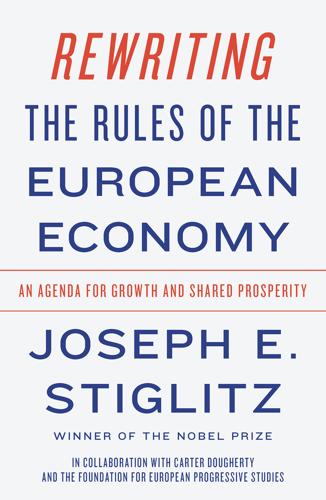
Rewriting the Rules of the European Economy: An Agenda for Growth and Shared Prosperity
by
Joseph E. Stiglitz
Published 28 Jan 2020
Bloomberg Global CEO Pay Index, Dec. 2017. 6. See Patrick Bolton and Frédéric Samama, “Loyalty‐Shares: Rewarding Long‐Term Investors,” Journal of Applied Corporate Finance 25, no. 3 (2013): 86–97. 7. Alissa Pelatan and Roberto Randazzo, “The First European Benefit Corporation,” Esela—The Legal Network for Social Impact, https://www.bwbllp.com/file/benefit-corporation-article-june-16-pdf, and “B Corp Movement in BeNeLux,” B Lab Europe, 2019, https://bcorporation.eu/about-b-lab/country-partner/benelux. 8. Keith Collins, “A Patent that Helped Amazon Take Over Online Commerce Is about to Expire,” Quartz, Aug. 19, 2017, https://qz.com/1057490/a-patent-that-helped-amazon-take-over-online-commerce-is-about-to-expire/. 9.
…
International trade becomes their ally in arguing for the kind of world that they, the corporations, had sought but could not get because domestically, within each country’s parliament, society balances the cost and benefits of these regulations. Provisions in recent trade agreements, going back to NAFTA, are designed to make it difficult, if not impossible, for new regulations to be imposed that adversely affect foreign investors, no matter what the social benefit. Corporations offer weak justification for their demands. They have said it is important to harmonize regulations and that different regulations act as non-tariff barriers to trade. They pleaded that all they are asking for is a reduction in these non-tariff barriers. However, when the corporations ask for harmonization, they typically mean doing so at the bottom, and not harmonizing up to the most stringent standards.

The Purpose Economy: How Your Desire for Impact, Personal Growth and Community Is Changing the World
by
Aaron Hurst
Published 31 Aug 2013
They leveraged the bright spot of social enterprise by creating infrastructure to help scale what were mostly grassroots efforts into a new organizational structure. But their most meaningful accomplishment may be their success in lobbying 19 states (as of this writing) to pass legislation that legally recognizes a new, socially responsible corporate structure—the Benefit Corporation. 5. Khan Academy: Open Education The Khan Academy emerged as MOOCs (massive open online courses) and began making headlines. Like other MOOCs, Khan Academy used technology—the Internet and its myriad media and sharing channels—to disrupt the education space. However, in offering online courses for free, Khan was able to tackle the lack of access to good, quality, public education in a way that garnered incredible support very early on at little cost.
…
GLOSSARY action tank: An effort inside or between organizations that sets goals, identifies the largest barriers to achieving those goals, and takes action to remove those barriers; a more action-oriented version of the think tank. Agrarian Economy: An economy centered around farming and the land. Benefit Corporation (B Corp): A corporate form in the U.S. designed for for-profit entities that want to consider society and the environment in addition to profit in their decision making process. B Corps differ from traditional corporations in regards to their purpose, accountability, and transparency. bright spots: One of the five levers that can be used to move a market in the Purpose Economy, this lever is typically an effort, usually small-scale, that has achieved a remarkable result and can act as starting place for others to build or expand a market.

What's Yours Is Mine: Against the Sharing Economy
by
Tom Slee
Published 18 Nov 2015
The Sharing Economy is invoking those ideals to build massive private fortunes, to erode real communities, to encourage a more entitled form of consumerism, and to create a future that is more precarious and more unequal than ever. There are others who see no contradiction between a social movement and private for-profit firms: these are the believers in “Benefit Corporations” and other forms of enlightened capitalism, who are thick on the ground in the San Francisco Bay area where the Sharing Economy has its home. I hope to convince some of these that the Sharing Economy is failing to deliver on their hopes. Many others are happy to promote a vision of inequality and deregulation for its own sake, in which money takes over the role of democratic institutions; this book does not have much to say to those who have that outlook.
…
Beyond the Sharing Economy, there are many examples, some of which we saw in Chapter 7: Lawrence Lessig’s idea of the “hybrid economy” 1 relies on amateurs and professionals working side by side, often on for-profit platforms; Social Enterprises are organizations that apply commercial strategies to maximize improvements in human and environmental well-being; Benefit Corporations such as Etsy, the online craft trading marketplace, are firms “that want to consider society and the environment in addition to profit in their decision making process.” The related idea of social entrepreneurship uses markets to scale up efforts to create social good. Groups such as Markets for Good (a wing of the Bill and Melinda Gates Foundation) and Google.org, the charitable arm of Google, put these ideas into practice.

Ours to Hack and to Own: The Rise of Platform Cooperativism, a New Vision for the Future of Work and a Fairer Internet
by
Trebor Scholz
and
Nathan Schneider
Published 14 Aug 2017
Members will be protected by identity verification, background checks and insurance. Just fixing babysitting will make life better for millions of families, but co-ops offer a perfect model for sharing everyday services like dog walking and other errands too. TimesFree is currently privately held and will be working toward benefit corporation status to help us continue to both serve our members as effectively as possible, and make safe and efficient cooperative, cash-free sharing available to everyone. So far, the company has been bootstrapped. I built the iOS app (released in August 2015) in Swift, with a MongoDB-hosted back end.
…
East Coast and West-Coast VCs have predicted 2016 as a year of price and value correction in the tech startup world. Ultimately, extreme decentralization by blockchain may prove ungovernable, at least initially. Governance and shared ownership form the basis of platform co-ops, which are distinct from the C-Corp, LLC, or even B-Corp (Public Benefit Corporation). As tech startup workers begin contending with severe tax penalties now that their stock is underwater, re-priced by institutional investors in down-rounds, the lure of laboring for VC-backed tech startups could begin to wane. As Silicon Valley’s supremacy falters, platform co-ops purveying new tech are well poised to offer a better kind of web, one that works more equitably for the people that create and use it because it promotes social justice rather than heralds dystopia as prophesied in science fiction co-ownership models. 19.
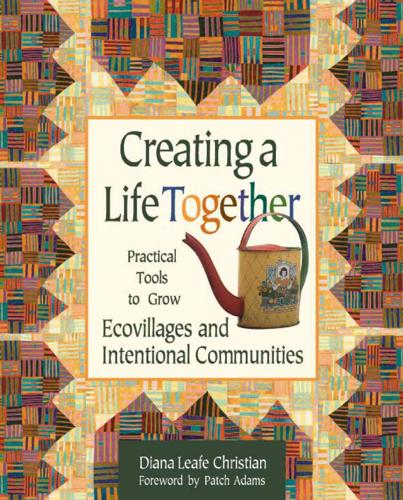
Creating a Life Together: Practical Tools to Grow Ecovillages and Intentional Communities
by
Diana Leafe Christian
Published 1 Jan 2003
Housing Co-ops — Separate Ownership and Use Rights Members of a housing co-op (also called a cooperative or a co-op) are shareholders in a corporation that owns the property. Their shares confer many of the rights of ownership to a particular housing unit, and a proprietary lease confers the right to live in that unit. Housing co-ops are set up as either non-profit 501(c)4 mutual benefit corporations, non-profit 501(c)3 public benefit corporations, or, in some states, as cooperative corporations, a specialized legal entity created for cooperatives. Sometimes a cooperative’s legal entity is a trust, and owners don’t have shares, but have beneficial interests in the trust. Cooperatives are taxed according to their nonprofit or cooperative corporation status. 183 If the housing units are of different sizes, or some are more desirable than others, members can either own specific shares for specific housing units (and these shares have different monetary values), or a higher number of shares for larger or more desirable units, depending on state law.
…
While the property for Mariposa Grove in Oakland, California was purchased and renovated by its founder, its members are considering reorganizing themselves as a limited equity housing co-op. To become a limited equity housing co-op, Mariposa Grove will incorporate either as a mutual benefit or a public benefit corporation (two kinds of legal entities offered in California). Non-exempt Non-profit Corporations Abundant Dawn in Virginia owns its property through a non-exempt non-profit corporation, which means it doesn’t have a particular IRS tax designation such as 528 or 501(c)3. Rather, its founders indicated in the community’s organizing documents that it was a non-profit or nonstock corporation (meaning it would not be organized to make a profit, and would have no stockholders and pay no dividends).
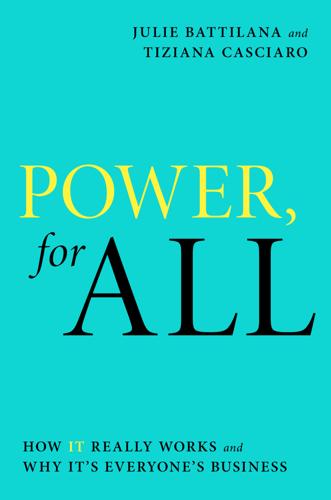
Power, for All: How It Really Works and Why It's Everyone's Business
by
Julie Battilana
and
Tiziana Casciaro
Published 30 Aug 2021
The good news is that new structures and systems that hold companies accountable not only for their financial performance, but also for their social and environmental impact, make real change possible.38 The Sustainability Accounting Standards Board created in 2011 by Jean Rogers, whom you met in chapter 6, is a prime example.39 The metrics that standard setting organizations like SASB have created are not, in themselves, enough to drive change. But complementary forces are coming into play with new legal forms—such as benefit corporations, or B-Corps, in the United States, Community Interest Companies in the United Kingdom, and sociétés à mission in France—paving the way for corporations to embrace the pursuit of a triple (social, environmental, and financial) bottom line and for their Boards to be held accountable for these multiple objectives.40 The infrastructure that surrounds companies—external auditors, financial analysts, and investors—is also beginning to slowly shift its mindset, as the growing number of impact investors, who seek out companies, organizations, and funds with social and environmental objectives alongside a financial return, shows.41 Even with new accountability systems, though, concentration of power is hard to avoid if only shareholders are represented on Boards.
…
For a comprehensive list of locations of any word or phrase, use your reading system’s search function. 2008 financial crisis, 118, 126 48 Laws of Power, The (Greene), 19 Aakash’s story, 82–84 abuse of power, 21, 37, 43, 110–13 access to valued resources changing power balance, 8–13, 194 collective choices, 195 expanding networks for, 194 Ning’s story, 61, 63–64 personal data surveillance, 151–54 purposeful use of technology and, 148, 150 reclaiming democratic power, 197 Adbusters, 118 Age of Surveillance Capitalism, The (Zuboff), 152 agitation, 118–20, 137, 154, 195, 196, 238n7 agricultural revolution, 142 AI Now Institute, 160 Aladdin, x algorithms, 148–51, 153, 158–60 Alighieri, Dante, 41 Alinsky, Saul D., 20 Allegory of Good and Bad Government, The (Lorenzetti), 165 Allen, Danielle, 186 Alphabet Workers Union, 157–58 altruism, 26, 30–31, 36–38, 55, 196 Amazon, 112, 152, 153, 157, 159 Amnesty International, 156 Andersen, Lene Rachel, 187, 188, 258n83 Anderson, Cameron, 211n25, 212n10, 212n13, 230n12, 250n3 Anderson, Elizabeth, 177 antitrust legislation, 11, 159 apartheid, 117 Appiah, Kwame Anthony, 218n18, 220n34 Apple, 113, 151, 153, 157, 158 Arab Spring, 109, 117, 118 Ardern, Jacinda, 53–54 Arendt, Hannah, 96 Argentina’s marriage equality story, 131–37, 242n34 Argentine LGBT Federation, 133–37, 242n34 Aristotle, 55, 57 artificial intelligence (AI), 148–49 Associação Saúde Criança (Instituto DARA), 28 attention economy, 152–53 attraction strategy, 8–11, 9, 12, 194 Austen, Jane, 46 authoritarianism, xvii, 36–38, 43, 122, 152, 185 authority-power relationship, 66–68, 69–70, 73 #BalanceTonPorc, 137 Banaji, Mahzarin R., 231n19, 231n20, 233n48 Banerjee, Abhijit V., 114 Barefoot College’s innovation, 144–46, 148, 161 Bastida, Xiye, 121–24 Beard, Mary, 101 Beauvoir, Simone de, 102 belonging, 2, 7, 58, 82, 105, 118, 133, 168, 187, 194, 221n40 See also valued resources: affiliation benefit corporations (B-Corps), 176 Bentham, Jeremy, 151, 245n30 Berners-Lee, Tim, 147, 148 betweenness, 79–81, 79, 153 Bhatia, Karan, 157 bias algorithmic, 150–51 fundamental attribution error, 16 negativity bias, 19 status quo bias, 74 confirmation bias, 88 See also stereotypes, racism, gender inequality BIPOC (Black, Indigenous, and People of Color), 88, 117, 151, 196 Björkman, Tomas, 187, 188, 258n83 Black Lives Matter movement, 117, 139, 141, 147–48 Black Voters Matter Fund, 190 Blau, Peter M., 261n4 Bloomberg, Michael, 130 Boards of Directors, 66, 86–89, 91–92, 128–130, 157, 169, 174–177, 188 Bonaparte, Napoleon, 47 Bourdieu, Pierre, 231n26, 232n34 Brass, Daniel J., 226n12 Brave New World (Huxley), 164 Brock, Timothy, 135 Brodsky, Greg, 162–63 Brown, LaTosha, 190–91 Browner, Carol, 80, 81, 84 Buddhism, 32–33 Buffett, Warren, 114 Buolamwini, Joy, 150 Burke, Tarana, 137 Burt, Ronald S., 227n25, 228n36, 236n66 Business Roundtable, 175–76 Caesar, Julius, 101 Cailliau, Robert, 147, 148 Capital (Marx), 110 Carnegie, Andrew, 110–11 Caro, Robert A., 14–15 Carus, Titus Lucretius, 41 caste system, 91–92 Castells, Manuel, 199, 231n26, 239n2, 261n9 Catholic Church, 131, 135 certified coaches, 5, 209n4 change-makers, 74, 78 Channapatna artisans, 47, 50 chattel slavery, 91–92 checks on power, 165–92 collective responsibility, 189–92 employee representation, 177–82 organizational power sharing, 167–73, 191–92 oversight and accountability, 173–77 societal power sharing, 182–84, 192, 256n63 structural limits, 165–66 See also civic education and engagement, civic vigilance Chenoweth, Erica, 124 Chomsky, Noam, 219n25, 257n77 Cialdini, Robert B., 210n15, 227n23 Citizens United, 118 civic education and engagement, 184–88 civic vigilance, 184–86, 192, 257n74, 257n79 Civil Rights Act, 14 Clegg, Stewart, 236n64, 262n22 Cleisthenes, 182, 256n63 climate science, 45–46 Clinton, Bill, 80 Coats, Michael, 167, 168, 169, 170, 171 Code of Hammurabi, 100–01 codetermination, 181 Cohen, Joshua, 257n75, 259n96 collective action consolidation strategy, 11–12, 111, 112 Google employees story, 154–58 keeping power in check, 192 power distribution responsibility, 195 shifting power balance and, 115, 178–79 collective movements, 117–39 agitation, 118–20, 137, 154, 195, 196, 239n6 digital technology and, xvii, 137–39, 154–58, 242n40 innovation, 119–20, 125–30, 147–49, 154, 195, 196 orchestration, 119–20, 131–37, 154, 195, 196 public agenda and, 120–25 shifting power balance, 115 collective orientation, 32, 36, 195 collective responsibility, 189–92 Community Interest Companies, 176 concentration of wealth, 162, 175–76, 189–90 confirmation bias, 88 Confucius, 55 consolidation strategy, 8, 9, 11–12, 111, 112, 142, 194 Contract with America (Gingrich), 80 Cook, Tim, 158 cooperatives, 162–63, 179–81 Cordeiro, Vera, 27–29, 33, 38–39, 166 Courpasson, David, 247n57, 262n22 COVID-19, 38, 49, 176 Creighton, Mandell, 24 CRISPR (clustered regularly interspaced short palindromic repeats), 162, 164, 249n79 Crozier, Michel, 225n6 Csikszentmihalyi, Mihaly, 42 Cuddy, Amy J.
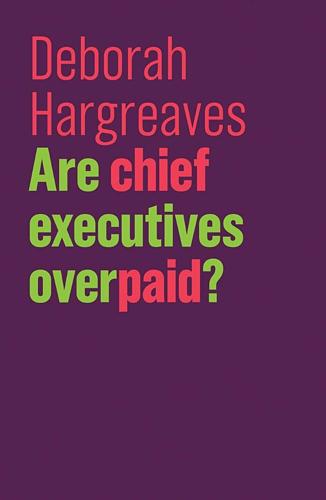
Are Chief Executives Overpaid?
by
Deborah Hargreaves
Published 29 Nov 2018
But if executives and shareholders are given different objectives and companies are constructed in new ways, we could achieve a radical transformation of the business world. Whether we call this a stakeholder approach or caring capitalism, it is nothing short of a new corporate ethos. We are starting to see some tentative steps emerging. For example, the Benefit Corporation movement that started in the US gives for-profit corporate entities new legal goals. These include a positive impact on society, workers, community and the environment, rather than just profit maximization for shareholders. Other smaller companies – often technology firms – are introducing low pay ratios or getting their employees to vote on the right level of pay for the boss.
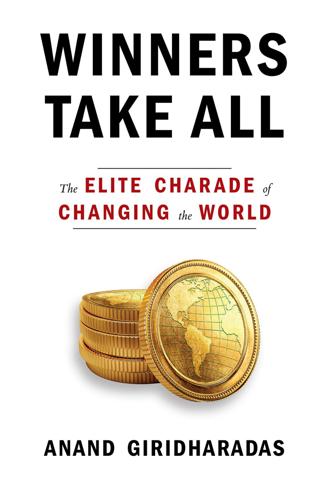
Winners Take All: The Elite Charade of Changing the World
by
Anand Giridharadas
Published 27 Aug 2018
Win-win is a frame of mind and heart that constantly seeks mutual benefit in all human interactions. Win-win means agreements or solutions are mutually beneficial and satisfying. We both get to eat the pie, and it tastes pretty darn good! This idea fueled MarketWorld’s approach to change and the rise of such things as social enterprises, social venture capital, impact investing, benefit corporations, double and triple bottom lines, “shared value” theories of business’s enlightened self-interest, give-one-get-one products, and various other expressions of this presumed harmony between what is good for winners and good for everyone else. “Is Giving the Secret to Getting Ahead?” asked the headline atop a New York Times Magazine article on the research of an organizational psychologist and self-styled “thought leader” named Adam Grant.
…
The trio batted around ideas for addressing this problem, and at last alighted on the vision of creating a parallel capitalist infrastructure, next to the traditional one, in which companies could be more responsible and conscious, and nonetheless raise money from capital markets and comply with the law. Thus was born the B Corporation, or benefit corporation, as it is also known. The three men started a nonprofit called B Lab, which gives better-behaved businesses a certification based on a rigorous analysis of their social and environmental practices. Kickstarter, King Arthur Flour, Ben & Jerry’s, and the Brazilian cosmetics company Natura are all B corps.
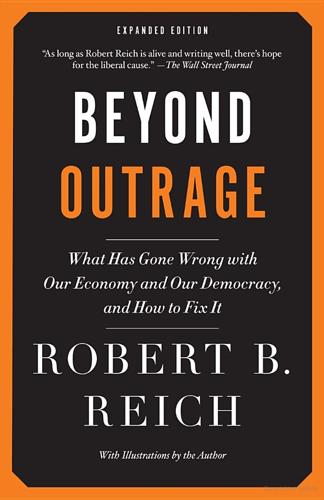
Beyond Outrage: Expanded Edition: What Has Gone Wrong With Our Economy and Our Democracy, and How to Fix It
by
Robert B. Reich
Published 3 Sep 2012
The same thing happened in the years leading up to the crash of 2008. And more recent data show the trends continuing. In other words, we still haven’t learned the essential lesson of the two big economic crashes of the last seventy-five years: when the economy becomes too lopsided—disproportionately benefiting corporate owners and top executives vis-à-vis average workers—it tips over. The real reason the American economy tanked in 2008, and why we’re still struggling to recover, is that the basic bargain has been broken. The big economic news isn’t the slow return of jobs. It’s the continuing drop in pay.
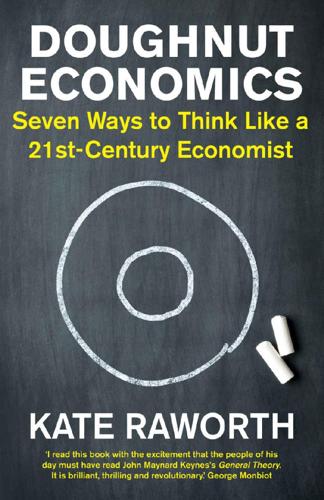
Doughnut Economics: Seven Ways to Think Like a 21st-Century Economist
by
Kate Raworth
Published 22 Mar 2017
‘We dedicated the Articles of Association and Memoranda – which in England is the legal definition of the purpose of your company – to human rights advocacy and social and environmental change,’ she explained in 2005, ‘so everything the company did had that as its canopy.’48 Today’s most innovative enterprises are inspired by the same idea: that the business of business is to contribute to a thriving world. And the growing family of enterprise structures that are intentionally distributive by design – including cooperatives, not-for-profits, community interest companies, and benefit corporations – can be regenerative by design too.49 By explicitly making a regenerative commitment in their corporate by-laws and enshrining it in their governance, they can safeguard a ‘living purpose’ through times of leadership change and protect it from mission creep. Indeed the most profound act of corporate responsibility for any company today is to rewrite its corporate by-laws, or articles of association, in order to redefine itself with a living purpose, rooted in regenerative and distributive design, and then to live and work by it.
…
Friedman, M. (1970) ‘The social responsibility of business is to increase its profits’, New York Times Magazine, 13 September. http://umich.edu/~thecore/doc/Friedman.pdf 47. Satya.com (2005) ‘A Dame of big ideas: the Satya interview with Anita Roddick’, http://www.satyamag.com/jan05/roddick.html 48. Satya.com (2005) ‘A Dame of big ideas’. 49. Benefit Corporation, http://benefitcorp.net/ and CIC Association, http://www.cicassociation.org.uk/about/what-is-a-cic 50. Satya.com (2005) ‘A Dame of big ideas: the Satya interview with Anita Roddick’, http://www.satyamag.com/jan05/roddick.html 51. John Fullerton’s speech at the launch of Regenerative Capitalism. https://www.youtube.com/watch?

The Coming Wave: Technology, Power, and the Twenty-First Century's Greatest Dilemma
by
Mustafa Suleyman
Published 4 Sep 2023
Facebook created its independent Oversight Board—staffed with ex-judges, campaigners, and expert academics to advise on governing the platform. It has come in for criticism from all quarters and clearly doesn’t “solve” the problem alone. But it’s important to begin by praising the effort, and encouraging Facebook and others to keep experimenting. Another example is the growing movement of public benefit corporations and B Corps, which are still for-profit companies but have a social mission inscribed into their legally defined goals. Technology companies that have strong containment mechanisms and goals written in as a fiduciary duty are a next step. There’s a good chance of positive change here, given the growth of these alternative corporate structures (more than ten thousand companies now use the B Corp structure).
…
Robert, 140 optimization problems, 98 organizational limitations, 148–50, 228 Orwell, George, 196 Otto, Nicolaus August, 23 Ottoman Empire, 38, 40 P Pakistan, 45 PaLM, 66, 68 pandemics, 205, 209, 243, 273–74 See also COVID-19 pandemic Pan Jianwei, 122–23 Paris Agreement, 45, 46, 263 Partial Test Ban Treaty (1963), 42–43 Partnership on AI, 246 patent system, 127 pathogens containment and, 273–74 gain-of-function (GOF) research, 175–77 lab leaks, 173–75, 176 PayPal, 188–89 peer review, 128 Pelosi, Nancy, 170 Perez, Carlota, 29, 132 pessimism aversion, viii, 13–14, 102, 236, 253 petrochemical industry, 87 Phantom camera quadcopter, 106 phishing, 171 phonograph, 35 physical self-modifications, 86, 200 Pi, 243 Plague of Justinian, 205 Plato, 5 PlayStation 2, 110–11 polio vaccine, 263 political polarization, 155 popular movements, 271–72 population size crisis of, 219–20 technology waves and, 27–28 populism, 153 post-sovereign world authoritarianism and, 185, 191–92 contradictions and, 202–4 corporations and, 186–89 decentralization and, 198–99, 200–202 dematerialization and, 189 democracies and, 185 ethnic cleansing and, 195 hybrid entities and, 196–97 power and, 184–85 surveillance and, 193–96, 206 power, 102 contradictions and, 202 nation-state fragility amplifiers and, 163–64 omni-use technology and, 182 post-sovereign world and, 184–85 power loom, 282–83 printing, 30, 35, 38–39, 40, 157 profit motive, 131–36 containment and, 254–58 proliferation, 30–31, 32–34 AI and, 68–69 inevitability of, 40–41, 47 protein folds, 88–90 Proteus, 94 Protocol on Blinding Laser Weapons (1995), 263 public benefit corporations, 258 Putin, Vladimir, 125 Q quantum computing, 97–99, 109, 114, 122 R R&D spending, 129, 134, 259 racism, 69, 239–40 radio, 157 railways, 23, 131–32 ransomware, 160–62 Reagan, Ronald, 201 Rebellion Defense, 166 red teaming, 246 Reformation, 35 regenerative technologies, 85 regulation as method for containment, 225–26 challenges of, 226–27, 229–30 legislation and, 260 licensing and, 261 nation-states and, 230–31 necessity of, 277 self-critical culture and, 269 reinforcement learning, 95, 117, 166–67, 240 See also machine learning Remotec Andros Mark 5A-1 robot, 97–98 Renaissance, 201 renewable energy, 100–101 Restrepo, Pascual, 179 revenge effects, 36, 176, 177 Ring, 227 RNA editing, 82 Robinson, James, 276, 278 robotics, 93–97 Chinese development of, 122 military applications, 165–66 profit motive and, 134–35 synthetic biology and, 109 Rogers, Everett, 56–57 Rotblat, Joseph, 270 Russell, Stuart, 115, 244 Russian flu epidemic, 173–74 Russian invasion of Ukraine, 44, 103–4 Rutherford, Ernest, 41 S Samsung Group, 188 Sanofi, 110 SARS, 174–75 scaling hypothesis, 67–68, 75 Schneier, Bruce, 167 Schumpeter, Joseph, 29 Scientific Revolution, 35, 127 SecureDNA, 247, 265 self-driving vehicles, 113 semiconductors, 32, 84, 249–50 SenseTime, 194 Shield AI, 166 silk, 41 Singer, Isaac, 133 Singularity, 74 See also superintelligence smartphones, 33, 60, 112, 187 Smil, Vaclav, 138 Snowden, Edward, 122 social media contradictions and, 202 disinformation and, 172 nation-states and, 155, 156 openness imperative and, 128 organizational efficiency and, 150 solar energy, 100, 198 Solugen, 86 South Korea, 188 Soviet Union, 171–72, 192 space debris, 36 space travel, 122 SpaceX, 104 Sparrow, 95 speed.
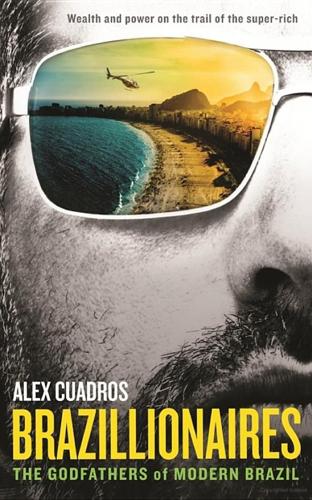
Brazillionaires: The Godfathers of Modern Brazil
by
Alex Cuadros
Published 1 Jun 2016
“There must be other bottom lines,” he told me, using the phrase in English. “These bottom lines will have to be richer; they’ll have to consider social and environmental questions. These are cultural questions, questions of values. The definition of happiness, the definition of success in business—both have to change.” He spoke excitedly of so-called benefit corporations, which are for-profit but put social and environmental goals in their bylaws. One example is Warby Parker, which for each pair of hipster glasses it sells distributes another pair to someone in the developing world. The irony of Leal’s vision is that he pursues it in much the same way his fellow billionaires pursue theirs.
…
See also Açu port project; specific companies Amazon gold rush and, 138–39 appearance, 135, 142–43, 148, 185, 252, 264–65, 277 asset seizure, 262, 267–68, 315n262 asset sell-off, 246 assets transferred to family, 262 background, 138–40, 167–69 bank deals, 215–16, 312n216 as “billionaire poor,” 253 BNDES loans to, 172–73, 191, 242–43, 244, 307n172 called a bolhonário, 189 campaign donations and favors, 171, 173, 184, 306n171 Carwash and, 276 comeback, 276–78, 286 CVM charges and trial, 247–50, 261–68, 276, 314n248 Dilma Rousseff and, 184–85, 191 employees of, 159–60 environmentalism and, 214, 304n147 Esteves, deal with, 218–23, 246 failure and, 153–56, 199 father and, 160, 167–70, 171, 200, 279–80 first major stumble as Brazil’s richest man, 185–88 Flávia Sampaio and, 155, 252, 253, 265 government backing and, 170–71, 173–74, 191, 223–24, 240, 280 as greatest entrepreneur, 174, 186 losses of, xvi, 188, 192, 218, 220, 222, 225, 227–28, 240–41, 243, 245, 246, 250, 251, 252, 253, 262 Lula and, 171–72, 173, 191, 269, 272 luxuries and lifestyle, xiii, 138, 139, 142–43, 157, 161, 165, 181, 203, 215, 227–28, 262, 287nxiii management style, 214–17, 311–12n216, 311n214 Maracanã and, 226–27, 231, 238, 240 marriage to Luma de Oliveira, 140–42 megalomania and, 156 mining interests, 138–40 (see also MMX Mineração & Metálicos; Vale) nationalist vision, 148–49, 159, 184–85, 213, 224, 277 number sixty-three, xii, 150, 179, 182 oil interests, 135–36, 145–46, 151–53, 304n146 (see also OGX Petróleo) Olympic Games 2016 and, 178 personal cash injections into his companies, 190–91, 215, 228, 249, 308n190 philanthropy, 159, 173, 204–5, 228 profit motive and, 214, 215 Protestant ethic and, 200 protests of 2013 and, 226–27, 231, 234, 240, 313n234 Rio and, 178–79 risk and, 145, 153, 155, 169, 170, 176, 187, 214, 222, 244, 245, 279, 280 sales and, 138, 139, 150–51, 280 secret of success and, 149–50 selling off stakes in EBX, 179–80, 221 Serrador, 179, 191, 217, 225, 246, 264 SLR McLaren of, xi, xii, xiii, xiv, 142, 161, 167, 181, 217, 230, 231 sons (see Batista, Balder; Batista, Olin; Batista, Thor) startups, xvi, 16, 137, 140, 144, 145, 146, 150, 154–55, 215–16 tax evasion and, 160–61, 248 Twitter account, 149, 162–63, 172–73, 174, 221, 222, 224, 240, 244 unlocking value and, 200 Vale takeover, 171–72 wealth of, xiv, 16, 135, 136–37, 139, 148, 157–59, 179, 180, 188, 218, 225, 243, 262, 288nxiv, 304n148, 308n180, 315n262 Batista, Eliezer, 136, 138, 152, 160, 167–71, 185, 200, 279–80, 306n167 Carajás and, 168–69 Batista, João, 121–23 Monte Sinai Turismo and, 123–24 Batista, Jutta, 167–68 Batista, Olin, 165–66, 253, 262 Batista, Thor, 164–67, 174, 185, 228–31, 234, 253–54, 262 auto accident and, xi–xiv, 162–64, 167, 174, 282–83, 287nxi business ideas, 278–79 named director at EBX, 217 trial and conviction, 228–31, 250, 254 Belém, Brazil, 294n59 Belfort, Jordan, 276 Belo Monte dam, 67, 68, 70–78, 239, 273, 294n68 benefit corporations, 213 Berkshire Hathaway, 210, 310n210 Berlusconi, Silvio, 143 Bermann, Célio, 73, 77 Bezos, Jeff, 26, 154 Big Brother (TV show), 217 billionaires, xv, xvi. See also Batista, Eike; specific billionaires art and, 27–28 banking heirs, 23, 28 Brazilian, investments favored by, 24 calculating net worth, 24, 156–57 crisis proof investments, 26, 27 as crooks, 39, 160 expansion as nature of, 131, 279, 281 forgotten crimes and, 39–42 growing wealth by, 23 hidden, 29–30, 52, 53, 59, 239, 293n53 increase in, world-wide, 17 luxuries and lifestyles, 21–28, 142, 143–44 (see also specific people) mesh of public/private and, 280–81 number of Brazilian, 100, 299n100 philanthropy and, 26, 159, 173, 193, 204–6, 228 politics as route to wealth, 32, 49–50 power and, 17, 32, 44, 49, 58, 77, 79, 81, 90, 122, 127, 131, 149, 191, 203, 206, 219, 275, 280 quest for profits, 208–11 role in innovation, 212 as rootless class, 211 tax avoidance, 205, 206, 214 tiers of wealth and, 26 in U.S., 24, 26 vanity projects, 26 Blackstone, 206 Bloomberg, Michael, 8, 26 Bloomberg Billionaires Index, 17, 188–89, 288nxiv, 298n93 Eike’s net worth, 180, 181, 188, 218, 251, 252, 308n180 Mata Pires and, 239 Bloomberg L.P, 8–9 Bloomberg Markets magazine, 219 “World’s Richest People,” 94 Bloomberg News, 9, 96, 136 author with, xv, 3, 8–9, 12, 13, 16, 17, 22, 29 “billionaires team,” 17 editor’s interview with Diniz, 3–6 Eike loses his billionairehood, 243–44 worth of Dirce Camargo, 52, 53 BNDES (Brazil’s state development bank), 54–55, 172, 216, 290n38 amount lent by, 2009, 172 campaign donations and, 275 companies backed by, 172 Dilma and, 183, 269, 316n269 Eike financed by, 172–73, 191, 242–43, 244, 276, 307n172 Lemann financed by, 201, 309n201 loans for stadiums, 237–38, 313n237 Lula influence-peddling investigation and, 285TK, 316–17n274 Boechat, Ricardo, 234–35 Boilesen, Henning, 40, 42, 53 Bolivia, 151 Bolsa Família, 15, 55, 57, 74, 96, 119, 207, 269, 272, 285, 299n96 Boni, 85, 87, 88, 91, 92 Bourroul, Sérgio, 56 Brahma beer company, 197 Branson, Richard, 213 Brasil, Francisco, 74, 75 Brasil Foods (BRF), 4–5, 172 Brasília, Brazil, 47, 55–56, 63–64, 178 Plano Piloto, 63 protests of 2013, 232, 234 Brazil, xiv–xv.

Finance and the Good Society
by
Robert J. Shiller
Published 1 Jan 2012
A bene t corporation is not legally obligated to maximize return to shareholders and so does not need to worry about lawsuits from those shareholders if it does not single-mindedly pursue pro ts. The articles of a bene t corporation may stipulate a speci c public purpose, which would make these corporations more clearly publicly oriented than are European corporations. A benefit corporation does not enjoy the tax advantages of a nonprofit. To date seven U.S. states have passed legislation to make possible these corporations. Maryland was the rst, in April 2010, followed by Vermont, New Jersey, Virginia, Hawaii, California, and New York. Still more states have legislation pending to enable them.5 This seems a healthy development, for many investors in private companies really do not want them to pursue pro ts single-mindedly.
…
See also financial institutions; investment banks; mortgage lenders; regulation, financial banksters, 37 Barro, Robert J., 133 Bartels, Larry M., 92 Basel Accords, 40, 55 Basel Committee on Banking Supervision, 40, 157 baskets, 147 Bear Stearns, 43, 45, 176 beauty: in finance, 133–34; symmetry and, 131–32, 133 Bebchuk, Lucian, 24, 25 Behan, Brendan, The Hostage, 238–39 behavioral economics, 9, 177, 238 behavioral finance, 9, 139, 235 benefit corporations, 121–22, 208 Berger, Helge, 158 Berle, Adolf A., 121 Bernasek, Anna, 36 Bill and Melinda Gates Foundation, 126 bipolar disorder, 173 Black, Fischer, 132, 186 black swan events, 35 Blair, Tony, 2 Bloom, Paul, 145 boards of directors: cronyism, 24–25; duties, 121; independence, 24; of nonprofit organizations, 120; reforms, 24; union representatives, 121, 249n4 (Chapter 17) Bodnaruk, Andriy, 28 Boehmer, Charles, 229 Bogle, John C., 33 bonds: GDP-linked, 117; inflation-indexed, 144–45, 146; social policy, 71.
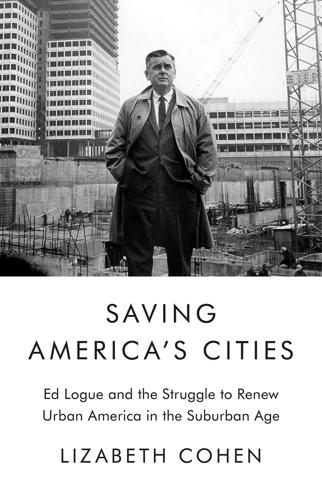
Saving America's Cities: Ed Logue and the Struggle to Renew Urban America in the Suburban Age
by
Lizabeth Cohen
Published 30 Sep 2019
But state bond issues, the tool to fund such initiatives, required voter approval, according to the state’s constitution, and in frustration Rockefeller had watched five of them go down to defeat.2 Now he and his team had come up with a new scheme to skirt the referendum problem: a state-level public benefit corporation (the legal term for public authority) with the ability to self-finance through issuing its own tax-exempt bonds. Special state appropriations and federal housing programs would supplement private-sector funding. Rockefeller was attracted to Logue’s deep experience and outsize reputation, though the two men had never met.
…
He then went on to oversee development projects in Latin America first as watchdog for the family’s Standard Oil Company and then as assistant secretary of state for Latin American affairs.16 Throughout his adult life, Rockefeller remained a devoted art collector and an aficionado of architecture. Figuring out how to implement a public benefit corporation to work around taxpayers’ opposition to bonds for subsidized housing required another kind of creativity. State-created public authorities with the powers to spend, borrow, collect rent, enter contracts, and sue or be sued had a history going back to the early twentieth century. Some considered them a fourth branch of government beyond the tripartite executive, legislature, and judiciary.
…
Detractors complained that self-financing authorities were less accountable than a normal government agency was, subjecting public needs to the vagaries of the private sector and to governance by independently appointed boards of directors rather than democratically elected officials.17 The UDC was in fact unusual among New York’s public benefit corporations for having its president appointed by and reporting to the governor, not the board, which tied its agenda more closely to Rockefeller’s, while also reducing Logue’s dependence on his directors.18 Rockefeller enthusiastically embraced the public authority structure as a way of delivering on his grand ambitions for New York State—and not incidentally the national attention he sought for himself—without the need for voter approval or deep state coffers.

Life Inc.: How the World Became a Corporation and How to Take It Back
by
Douglas Rushkoff
Published 1 Jun 2009
Political leaders have all the emotional power—and insubstantiality—of the tested images on which their campaigns are based. As long as we experience the world from the perspective of its corporate conglomerates, we will remain oblivious to the activity and opportunities still available to us on a human scale. We will continue to fight on a battlefield that was created to benefit corporate actors while disempowering and dehumanizing real people. And the longer we limit our activity to this synthetic sphere, the further we mistake this artificial landscape for the territory on which we are to act. The corporation is a significant but invented institution—and the impact of its invention on our relationship to one another and the world around us was as significant as the invention of an abstract God.
…
In both historical cases, central currency was a means of control, taxation, and centralization of authority during expansive dictatorships. And, in both cases, after a few hundred years, the continual debasement of currency led to the fall of the empire. We’re fast approaching the limits of our own currency system, instated to benefit corporate interests and adjusted over time to do it ever more efficiently and automatically. If double-entry bookkeeping can be thought of as the spreadsheet software on which businesses learned to reconcile their debits and credits, central currency was the operating system on which this accounting took place.

Doppelganger: A Trip Into the Mirror World
by
Naomi Klein
Published 11 Sep 2023
In the years that it took to research and write The Shock Doctrine, my 2007 book on this topic, I delved deeply into how post-shock states of discombobulation have been opportunistically exploited in many different contexts: 9/11, the collapse of the Soviet Union, the invasion of Iraq, Hurricane Katrina, and events significantly further back in time. With the public terrified and distracted, power-hungry players were able to move in and ram through policies that benefited corporate elites without debate or consent—not unlike the brutal methods deployed by torturers who use isolation and stress to soften up and break their prisoners. As I conducted this research, tracking the attacks on political rights as well as the auctioning off of public lands and services, I always imagined myself to be immune to these shock tactics, since I knew how they worked.
…
That is old-school disaster capitalism picking our pockets; this is disaster capitalism mining our attention, at a time when attention is arguably our culture’s most valuable commodity. Conspiracies have always swirled in times of crisis—but never before have they been a booming industry in their own right. Covid was a “capitalizable conspiracy,” as William Callison and Quinn Slobodian put it. So, in addition to the usual attempts to smuggle in policies that benefit corporate elites at the expense of broader publics, and to directly profiteer off the need for medical equipment and treatments (both phenomena we most certainly have seen during the pandemic), we have also been confronted with a small army of diagonalists peddling over-the-top conspiracy theories about how the whole disaster was manufactured by a shady cabal so that it can bring in their New World Order/eugenicist agenda.
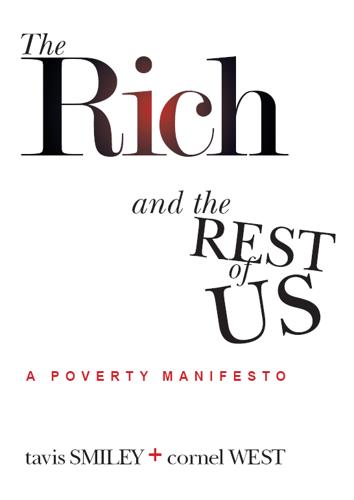
The Rich and the Rest of Us
by
Tavis Smiley
Published 15 Feb 2012
Fundamental Fairness lawyers will pursue new taxation ideas and support other plans and efforts, including the lowering of tax payments for low-income families and the working poor; taxation that boosts America’s safety-net services and an increase of taxes on the rich; regulation and taxation of “paper” headquarters located in faraway lands that enable the wealthy to legally dodge their tax burdens; and the closing of tax loopholes and tax breaks that benefit corporations that outsource American jobs. HEALTH ASSURANCE According to a 2009 study conducted by Harvard Medical School and Cambridge Health Alliance, nearly 45,000 people die each year because they lack health insurance. Uninsured, working-age Americans, according to the researchers, have a 40 percent higher risk of death than their privately insured counterparts, up from a 25 percent rate found in 1993.102 The uninsured are more likely to go without needed health care or wind up going to emergency rooms, often after preventable illnesses have reached advanced or deadly stages.

The Driver in the Driverless Car: How Our Technology Choices Will Create the Future
by
Vivek Wadhwa
and
Alex Salkever
Published 2 Apr 2017
At the core of our approach is Stewardship, a deep sense of responsibility to administer the company for the benefit of all of our stakeholder groups including authors, customers, employees, investors, service providers, and the communities and environment around us. Everything we do is built around this and our other key values of quality, partnership, inclusion, and sustainability. This is why we are both a B-Corporation and a California Benefit Corporation—a certification and a for-profit legal status that require us to adhere to the highest standards for corporate, social, and environmental performance. We are grateful to our readers, authors, and other friends of the company who consider themselves to be part of the BK Community. We hope that you, too, will join us in our mission.
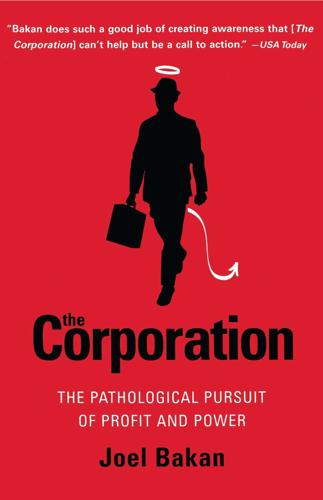
The Corporation: The Pathological Pursuit of Profit and Power
by
Joel Bakan
Published 1 Jan 2003
More generally, for Browne and all other big business leaders, social and environmental goals are, and must be, strategies to advance the interests of their companies and shareholders; they can never legitimately be pursued as ends in themselves. That may seem an unduly narrow view, especially when one considers the concrete social and environmental benefits corporate initiatives could foster, but no one among leaders of publicly traded companies is prepared, or legally authorized, to take corporate social responsibility any further. Hank McKinnell, the CEO of Pfizer, who says he wants his company to do more good for more people than any other company in the Page 47 world, concedes that corporate self-interest is, and must be, the primary motivation behind his company's good deeds.
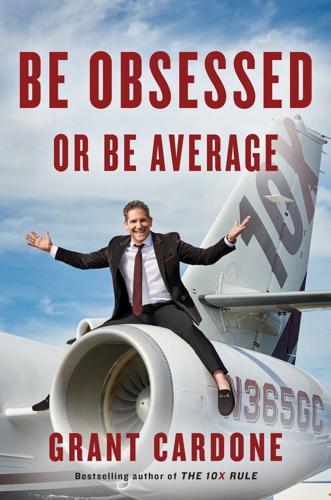
Be Obsessed or Be Average
by
Grant Cardone
Published 20 Sep 2016
CCHR has long fought to restore basic, inalienable human rights to the field of mental health, including but not limited to full, informed consent regarding the medical legitimacy of psychiatric diagnosis, the risks of psychiatric treatments, the right to all available medical alternatives, and the right to refuse any treatment considered harmful. DrugFreeWorld.org: The Foundation for a Drug-Free World is a nonprofit public benefit corporation that empowers youth and adults with factual information about drugs so they can make informed decisions and live drug-free. RESOURCES CARDONEUNIVERSITY.COM Cardone University is the number one sales system in the world. It offers Grant Cardone’s most extensive sales training curriculum on the web today.

Makeshift Metropolis: Ideas About Cities
by
Witold Rybczynski
Published 9 Nov 2010
The answer to large urban development has turned out to be big projects that are, at the same time, collections of little plans. Like Penn’s Landing, Battery Park City on the Hudson River in Lower Manhattan was built on landfill (produced by the excavations for the World Trade Center). The ninety-two-acre project was planned and coordinated by the Battery Park City Authority, a public-benefit corporation created by New York State in 1968, about the same time as the Penn’s Landing Corporation came into being. As in Philadelphia, the first designs for Battery Park City were ambitious megastructures on superblocks, and they suffered the same fate. The project took a different turn in 1979, when the Authority commissioned Alexander Cooper and Stanton Eckstut to create a plan that could be implemented by several different developers in successive phases.

What If We Get It Right?: Visions of Climate Futures
by
Ayana Elizabeth Johnson
Published 17 Sep 2024
From wherever you sit, push forward on the ten items in the corporate list above. Vote with your dollars. Choose companies that stand for quality—offering products that are durable, versatile, and low-impact—and are committed to really giving back to communities and the planet. And avoid those that don’t. One way to do this is by supporting brands that are certified benefit corporations (B Corps)—companies that are legally required to put care for people and the planet, along with profit, at the center of their business strategy. For decades, environmental justice communities have been elucidating how businesses largely caused the four intertwined crises we face—climate, biodiversity, injustice, and democracy—and made a windfall doing it.
…
See carbon capture and storage carbon tax, 165, 288 Carson, Rachel, 427 Carver, George Washington, 84 Castor, Kathy, 311 catalytic hope, 399 catastrophes, 350 See also disasters CDFIs (community development financial institutions), 384 CEJST (Climate Economic Justice Screening Tool), 385 certified benefit corporations, 167 Chevron, 263n Chicago, what transformation could look like, 295–96 childcare, 286–87 children, decisions about having, 200 China: air pollution in, 268–69, 279 climate policy collaboration with, 278–80 economic development in, 268, 269, 271, 276–78 emissions responsibility, 260, 263, 271, 276 circularity: economic principles, 89, 161 embodied energy and architectural design, 114 Citelli, Anna, 112 citizenship.

Social Democratic America
by
Lane Kenworthy
Published 3 Jan 2014
Another potential advantage is that a defined-contribution plan isn’t vulnerable to a firm going out of business or declaring bankruptcy. Such an occurrence can leave those in a traditional company pension plan out in the cold, though most such pensions are guaranteed by the federal government-backed Pension Guarantee Benefit Corporation. 24. Economist 2008; Ghilarducci 2008; Wolff 2011; Fletcher 2013. 25. My calculations using OECD data. 26. Layard 2005. 27. Rose and Winship 2009, figure 6. 28. Rose and Winship 2009, figure 2. For additional estimates based on the PSID data, see Gosselin and Zimmerman 2008; Hacker and Jacobs 2008; Jensen and Shore 2008; Dynan 2010; Dynan, Elmendorf, and Sichel 2012. 29.
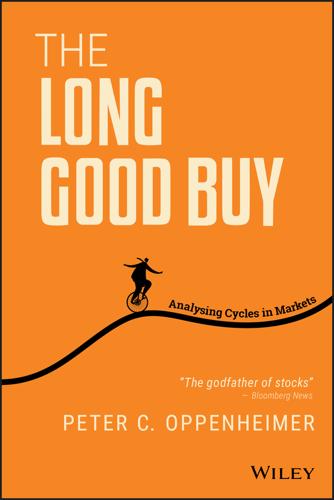
The Long Good Buy: Analysing Cycles in Markets
by
Peter Oppenheimer
Published 3 May 2020
In terms of profitability, history suggests that most cyclical bear markets are associated with relatively short-lived declines in profitability. On average, profits start to recover about 10 months after the end of the bear market. Again, this is partly a response to the decline in interest rates beginning to benefit corporates via lower interest charges, but it is also a result of operational gearing kicking in as volume growth starts to recover. Cyclical bear markets are often global in nature (but they do not have to be) given their dependence on the economic cycle. Economies and interest rates are not always synchronised.

Death Glitch: How Techno-Solutionism Fails Us in This Life and Beyond
by
Tamara Kneese
Published 14 Aug 2023
These companies are based on the idea that digital remains are intrinsically tied to people’s imagined legacies and act as extensions of their personal and collective identity. As devices—from Fitbits to smart homes—track individuals and populations, accumulated data can form powerful predictive models that benefit corporations and advertisers. The speculative and affective capacities of accumulated data also generate cultural fantasies about approximating a human subject through patterns of information, leading to new startups that allow the dead to continue communicating with the living.57 However, the longevity of communicative traces is unclear.
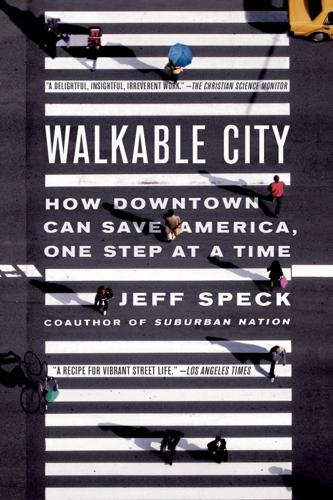
Walkable City: How Downtown Can Save America, One Step at a Time
by
Jeff Speck
Published 13 Nov 2012
●We came in second to the one Roman architect in the bunch, an outcome that, given local politics, felt like a victory. His winning proposal, a gravity-defying megabuilding, has yet to be built. (Of those invited, Moneo and Koolhaas ultimately decided not to submit.) ●Probably the best-known example of such an approach is Manhattan’s Battery Park City, which was developed and remains owned by a public-benefit corporation. As described by Witold Rybczynski, “It was designed to grow piecemeal, building by building, with individual projects financed and built by different developers, in response to changing market demands, but following the architectural guidelines of the master plan” (Rybczynski, Makeshift Metropolis, 151).
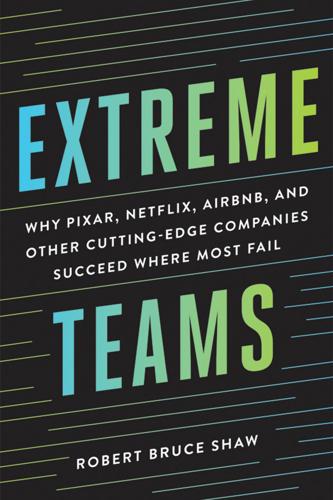
Extreme Teams: Why Pixar, Netflix, AirBnB, and Other Cutting-Edge Companies Succeed Where Most Fail
by
Robert Bruce Shaw
,
James Foster
and
Brilliance Audio
Published 14 Oct 2017
The company, after reaching $100 million in sales, reduced its workforce by 20 percent—letting go of friends and friends of friends, in Chouinard’s words. The company planned on 50% growth but, because of a recession, achieved 30% growth. 6Robert Bruce Shaw interview. 7See the Patagonia Annual Benefit Corporation Report, Fiscal Year 2013. The firm states that its goal is to cause no unnecessary harm to the planet by continually seeking to reduce “the impact of its operations in water use, energy use, greenhouse gas emissions, chemical use, toxicity and waste.” www.patagonia.com/pdf/en_US/bcorp_annual_report_2014.pdf. 8The ad reads, “The most challenging, and important, element of the Common Threads Initiative is this: to lighten our environmental footprint, everyone needs to consume less.

Lurking: How a Person Became a User
by
Joanne McNeil
Published 25 Feb 2020
But the start-up’s manifesto failed to mention that its proposal to build a social network where users are not the “product that’s bought and sold” was venture capital–backed. It had to return on the VC investment eventually; either it would exploit you somehow, or it was vaporware. It was a public-benefit corporation, which is not a nonprofit, let alone some worker/user–owned co-op utopian project. Right after I signed up, I started gaining followers—hundreds and hundreds overnight. All but a dozen were strangers. Ello featured my image and avatar on the login page, along with a handful of its other “favorite users.”
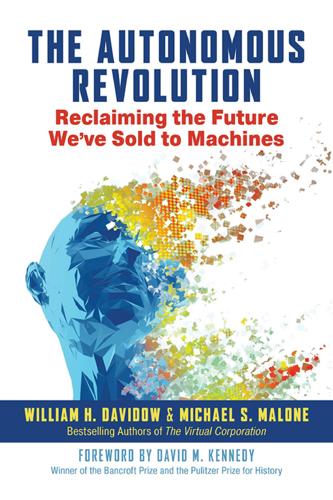
The Autonomous Revolution: Reclaiming the Future We’ve Sold to Machines
by
William Davidow
and
Michael Malone
Published 18 Feb 2020
At the core of this approach is stewardship, a deep sense of responsibility to administer the company for the benefit of all of our stakeholder groups, including authors, customers, employees, investors, service providers, sales partners, and the communities and environment around us. Everything we do is built around stewardship and our other core values of quality, partnership, inclusion, and sustainability. This is why Berrett-Koehler is the first book publishing company to be both a B Corporation (a rigorous certification) and a benefit corporation (a for-profit legal status), which together require us to adhere to the highest standards for corporate, social, and environmental performance. And it is why we have instituted many pioneering practices (which you can learn about at www.bkconnection.com), including the Berrett-Koehler Constitution, the Bill of Rights and Responsibilities for BK Authors, and our unique Author Days.
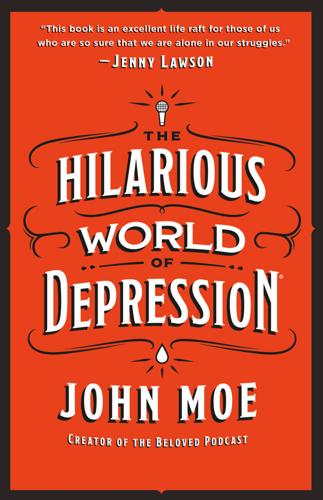
The Hilarious World of Depression
by
John Moe
Published 4 May 2020
—were not only culturally on display but were tools to a more advanced life than other people had. You’d get ahead and stay ahead. We watched Lifestyles of the Rich and Famous on television. We believed that Donald Trump was a shrewd and wealthy businessman. All this in an era when the Reagan administration tilted the federal government to benefit corporations and away from providing protection and a safety net for individuals. We fetishized our own exploitation. Much the same spirit existed at Amazon. The power ties and hair gel had been replaced by blue oxfords and khakis, but the culture was the same. Amazon folks were expected to put in at least fifty hours a week at the time but preferably much more, and a kind of macho culture ensued, wherein employees (Amazonians, people other than me called us) would try to top each other in importance and hours worked.

Servant Economy: Where America's Elite Is Sending the Middle Class
by
Jeff Faux
Published 16 May 2012
The common source of that wealth is the business corporation. Individual corporations compete against one another in the marketplace and often lobby on different sides of tax, subsidy, and regulatory issues, but on the fundamental questions of the nature of economic growth and the distribution of its benefits, corporate interests are united and dominant. The Global Class War estimated the superrich as comprising about 1 to 2 percent of the American people, with the total population of the economically privileged at about 20 percent. When given three choices—rich, middle class, and poor—some 80 to 90 percent of Americans regularly self-identify as middle class.
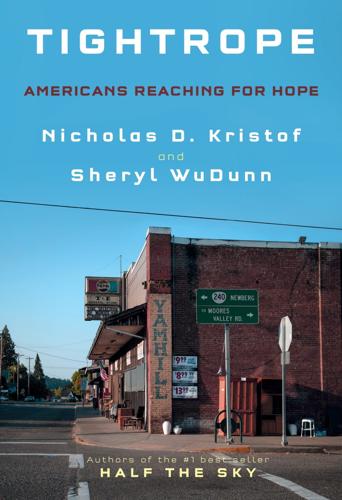
Tightrope: Americans Reaching for Hope
by
Nicholas D. Kristof
and
Sheryl Wudunn
Published 14 Jan 2020
(Note also that while taxes are high, the average Dane works one-fifth fewer hours in a year than the average American.) We once asked Alan Krueger, the late Princeton University economist who was previously chairman of the White House Council of Economic Advisers, about our perception that the American economy increasingly is structured unfairly to benefit corporations and hurt ordinary citizens. We thought he might push back, but he agreed completely. “The economy is rigged,” he said. That in turn reflects a political dimension that exacerbates the inequity: the Citizens United ruling by the Supreme Court and related cases in effect legalize graft by ruling that corporations and other players can spend “independent” money on campaigns without any limit.

Forward: Notes on the Future of Our Democracy
by
Andrew Yang
Published 15 Nov 2021
The Rebuild Local News plan includes a $250 refundable tax credit for each person to pay for a subscription or donation to a local news source, a credit of up to $5,000 for any small business to buy local advertising, and a $300 million fund that would match three to one any donations to a journalism nonprofit. They also recommend that the IRS define public service journalism as a viable tax-deductible nonprofit activity and allow newspaper chains to divest local newspapers into locally owned nonprofits or public benefit corporations in return for enhanced tax benefits. Federal advertising budgets would be spent on local media organizations, and tax credits would be provided for maintaining journalists and staffers. Five thousand local reporters would be sent to local newsrooms through national service programs. The Local Journalism Sustainability Act, which includes some of these measures, has attracted fifty co-sponsors in Congress as of this writing, from both parties.
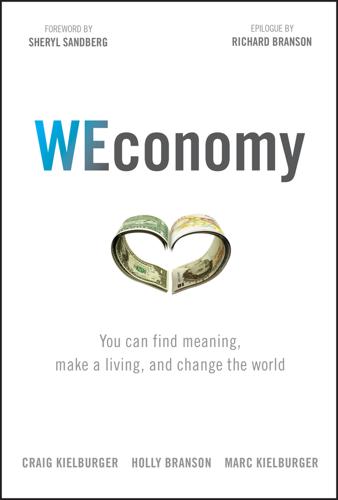
WEconomy: You Can Find Meaning, Make a Living, and Change the World
by
Craig Kielburger
,
Holly Branson
,
Marc Kielburger
,
Sir Richard Branson
and
Sheryl Sandberg
Published 7 Mar 2018
Frustrated by this experience, Gilbert wanted to help other entrepreneurs build socially responsible businesses with a public legacy that would be preserved, even if the reins were passed on. Equally important, Gilbert wanted to help consumers make informed choices, to invent a way to check the authenticity of a company's purpose. Enter the benefit corporation, or B Corp, a nonprofit that assesses for-profit companies against rigorous standards of social and environmental performance, accountability, and transparency. The assessments are done at the B Lab, based in Pennsylvania, which evaluates and grades any organization that wants B Corp certification.

Ghost Work: How to Stop Silicon Valley From Building a New Global Underclass
by
Mary L. Gray
and
Siddharth Suri
Published 6 May 2019
They are among a growing number of what are called “social entrepreneurships” that hold themselves accountable for making a profit for their investors, like any other for-profit enterprise. They also explicitly put themselves on the line to meet a measurable social welfare goal, from being carbon-neutral to expanding job opportunities. Companies from Patagonia to those profiled in this book, like CloudFactory and LeadGenius, register as benefit corporations, or B Corps, to make their commitments a matter of public record. B Corps are for-profit entities that register their intent to make a positive impact on its workers and society at large, through policies like fair labor practices, community giving campaigns, and clean environmental practices.

Artificial Whiteness
by
Yarden Katz
And contrary to the professional academic impulse, probably the last thing that is needed is a new subfield of “critical” AI studies.2 Indeed, in recent decades there have been pleas for AI practitioners to adopt more “critical” or “ethical” stances alongside attempts to sketch various “critical technical practices.” These were accompanied by calls for more collaboration between AI practitioners and the social scientists who study them. Such pleas reproduce the problematic fixation on “AI” that benefits corporations and the national security state, even if they desperately try to invert its valence (“AI for social justice” rather than “AI for war”). Since AI isn’t the general-purpose technology experts present it as but a technology of whiteness, the attempted inversion becomes another justification for AI’s expert industry and its initiatives.

The Metropolitan Revolution: How Cities and Metros Are Fixing Our Broken Politics and Fragile Economy
by
Bruce Katz
and
Jennifer Bradley
Published 10 Jun 2013
As Gerald Frug and David Barron show in their superb book City Bound, states are even guiltier of constraining local autonomy.4 Despite their reputation as laboratories of democracy, states have often constricted their metros, fiscally, programmatically, and governmentally. States have used their power not only to define and limit the power and geography of cities and municipalities but also to create a dizzying, often comical array of special-purpose entities: school districts, fire districts, library districts, sewer districts, mosquito districts, public benefit corporations, industrial development authorities, transportation authorities, port authorities, workforce investment boards, redevelopment authorities, control boards, and emergency financial managers.5 Fundamentally, cities and metropolitan areas have either been places acted on or the backdrops and locations where state and federal interventions have been made, whether for ill or good.

Irrational Exuberance: With a New Preface by the Author
by
Robert J. Shiller
Published 15 Feb 2000
The story was picked up by the Associated Press and United News the following day and given front-page treatment around the country on Tuesday, October 29.12 It is conceivable that the Smoot-Hawley tariff might have been expected to hurt the outlook for U.S. corporate profits. One could have thought that it would generally benefit corporations, many of whom actively sought the tariff. But it has been argued by historians of the 1929 crash that the tariff might have been expected to have the opposite effect, given the retaliation from other countries that it would engender. Allan Meltzer in fact argued that the tariff could be the reason “why the 1929 recession did not follow the path of previous monetary contractions but became the Great Depression.”13 However, other economists, including Rudiger Dornbusch and Stanley Fischer, pointed out that exports were only 7% TH E N E WS ME D IA 85 of the gross national product (GNP) in 1929 and that between 1929 and 1931 they fell by only 1.5% of 1929 GNP.
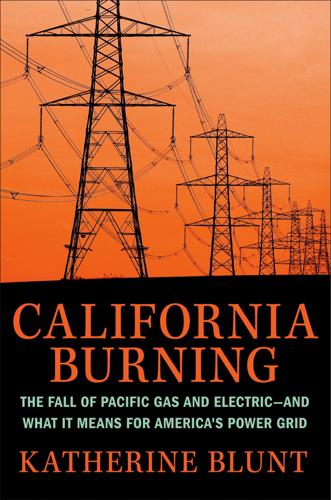
California Burning: The Fall of Pacific Gas and Electric--And What It Means for America's Power Grid
by
Katherine Blunt
Published 29 Aug 2022
GO TO NOTE REFERENCE IN TEXT PG&E had become his white whale: Richard, interview. GO TO NOTE REFERENCE IN TEXT still more than eight hundred: Estimate by the National Rural Electric Cooperative Association, a trade group. GO TO NOTE REFERENCE IN TEXT In a pitch explaining: “Reorganizing PG&E as a Customer-Owned, Mutual Benefit Corporation,” PowerPoint presentation, October 2019. GO TO NOTE REFERENCE IN TEXT had an immediate rapport: Richard, interview. GO TO NOTE REFERENCE IN TEXT Richard followed up with more information: Richard, interview. GO TO NOTE REFERENCE IN TEXT On October 21, 2019: Rebecca Smith, “San Jose to Propose Turning PG&E into Giant Customer-Owned Utility,” Wall Street Journal, October 21, 2019.

The Glass Half-Empty: Debunking the Myth of Progress in the Twenty-First Century
by
Rodrigo Aguilera
Published 10 Mar 2020
But even now we are already witnessing capitalism’s gradual mutation for post-crisis survival. Enter “woke capitalism”, a term coined by New York Times writer Joss Douthat in a 2018 piece which pointed out the ways in which, at least in the US, the corporate elite had begun co-opting social issues for their own benefit: Corporate activism on social issues isn’t in tension with corporate self-interest on tax policy and corporate stinginess in paychecks. Rather, the activism increasingly exists to protect the self-interest and the stinginess — to justify the ways of C.E.O.s to cultural power brokers, so that those same power brokers will leave them alone (and forgive their support for Trump’s economic agenda) in realms that matter more to the corporate bottom line.15 A notorious example of woke capitalism was the hiring of Colin Kaepernick, the NFL quarterback who first took the knee rather than stand for the national anthem in order to protest police brutality against African-Americans, in a Nike ad that makes implicit reference to his political activism.16 Another is a Gillette ad against toxic masculinity that attempted to bank on the #MeToo movement.17 It is not that these ads went down well with everyone; conservatives and New Right sympathizers immediately decried them as yet another example of political correctness taken to the extremes.

Who’s Raising the Kids?: Big Tech, Big Business, and the Lives of Children
by
Susan Linn
Published 12 Sep 2022
Under the guise of bringing much needed cash, supplies, equipment, or services to struggling schools, companies get to advertise by acquiring naming rights, branding sports uniforms, sponsoring assemblies, and more.19 It’s not surprising that financially strapped schools turn to corporate marketers for help. But subjecting students to marketing almost never comes close to replenishing diminishing school budgets.20 While rarely contributing significantly to school coffers, marketing in schools does benefit corporations. Advertisers have long waxed rhapsodic about the benefits of targeting students in classrooms, on school busses, in cafeterias, and in gyms. As one enthusiast for in-school advertising proclaimed over twenty years ago, “Marketers have realized that all roads eventually lead to schools.”21 Another explained the appeal this way: “The advertiser gets kids who cannot go to the bathroom, cannot change the station, who cannot listen to their mother yell in the background, and who cannot be playing Nintendo.”22 That’s why, way back in 1995, Consumers Union titled their report on school commercialism Captive Kids.23 Even if incorporating advertising did significantly increase school budgets, it’s clear that marketing in schools contributes to all sorts of ill effects in students.

Fortunes of Change: The Rise of the Liberal Rich and the Remaking of America
by
David Callahan
Published 9 Aug 2010
The Bush team played to type, as a war cabinet made up largely of multimillionaires and dominated by three former CEOs— Bush, Cheney, and Rumsfeld—embarked on imperial adventures. The Clinton era was quieter but also confirmed populist fears. An administration heavy with wealthy Wall Streeters, Robert Rubin most notably, put globalization on a fast track and removed trade barriers to make the world flatter in ways that benefited corporations while leaving U.S. workers to be steamrolled by foreign competition. In the view of critics such as Naomi Klein, the rich have turned the world into one big zone of plunder, with multinational corporations moving like locusts to suck wealth from developing countries. All the while, oblivious to the suffering of billions, the wealthy treat foreign countries as playgrounds, bopping around in carbon-spewing private jets to places like Cabo San Lucas, Cannes, and Dubai.
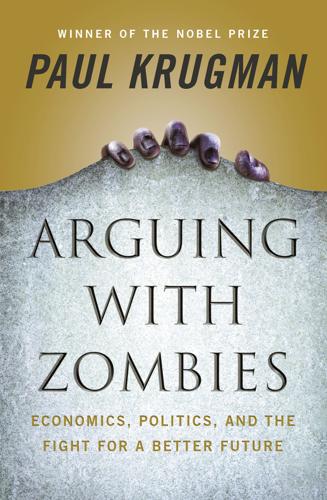
Arguing With Zombies: Economics, Politics, and the Fight for a Better Future
by
Paul Krugman
Published 28 Jan 2020
But he’s been in office for a year and a half, time enough to be judged on what he does, not what he says. And his administration has been relentlessly anti-worker on every front. Trump is about as populist as he is godly—that is, not at all. Start with tax policy, where Trump’s major legislative achievement is a tax cut that mainly benefits corporations—whose tax payments have fallen off a cliff—and has done nothing at all to raise wages. The tax plan does so little for ordinary Americans that Republicans have stopped campaigning on it. Yet the administration is floating the (probably illegal) idea of using executive action to cut taxes on the rich by an extra $100 billion.

The End of Wall Street
by
Roger Lowenstein
Published 15 Jan 2010
Mozilo, especially, espoused a prettified version of capitalism that was stripped of its raw but inescapable truth: one needed capital to pursue it. In 2003, in a speech cosponsored by Harvard University and the National Housing Endowment, Mozilo proclaimed, “Expanding the American dream of homeownership must continue to be our mission, not solely for the purpose of benefiting corporate America, but more importantly, to make our country a better place.” Among Mozilo’s suggestions for national betterment was that mortgages should be available to people who made no down payment.2 This no doubt struck some listeners as fair-minded, but it had little basis in economics. For capitalism to function, credit must be rationed on the basis of balance-sheet soundness.

The Firm
by
Duff McDonald
Published 1 Jun 2014
While Corson merely served on commissions, Bales had managed to become a de facto government employee while still working at McKinsey. “McKinsey was . . . in title and in fact, both a public and private organization,” wrote Guttman and Willner in The Shadow Government.26 Bales—and McKinsey—later participated in the creation of a public benefit corporation designed to take over management of the city’s municipal hospitals. Bales signed, on behalf of McKinsey, a letter of intent to provide $325,000 worth of “management assistance” to the corporation. Who was one of the people on the other side of the (figurative) table? Carter Bales, in his role as assistant budget director.
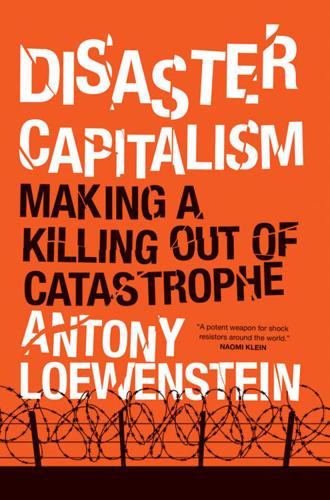
Disaster Capitalism: Making a Killing Out of Catastrophe
by
Antony Loewenstein
Published 1 Sep 2015
Grimaldi and Robert O’Harrow, Jr., “In Egypt, Corruption Cases Had an American Root,” Washington Post, October 20, 2011. 12Jennifer Schuessler, “In History Departments, It’s Up with Capitalism,” New York Times, April 6, 2013. 13Andrew Hussey, “Occupy Was Right: Capitalism Has Failed the World,” Observer, April 13, 2014. 14Gillian Tett, “Anxiety in the Age of Inequality,” Foreign Policy, November/December 2014. 15Naomi Klein, The Shock Doctrine: The Rise of Disaster Capitalism (London: Penguin, 2007), pp. 3–21. 16A poll conducted by Essential Research in 2012 found that a majority of Australians believed that the economic “reforms” introduced by successive governments had “[most] benefited” corporations; only 5 percent thought that “ordinary Australians benefited.” Essential Research, Economic Reforms, June 4, 2012. 17Naomi Klein, “Super Storm Sandy—A People’s Shock?” Nation, November 5, 2012. 18Andrew Martin, “Hurricane Sandy and the Disaster-Preparedness Economy,” New York Times, November 10, 2012.

Everybody's Guide to Small Claims Court
by
Ralph E. Warner
Published 2 Jan 1978
Evictions: No. Jury trials: Defendant may request jury trial at least 1 day prior to hearing. Must file affidavit stating issues that require jury trial. Notes: Corporations and partnerships cannot sue in small claims court, but may appear as defendants. (Does not apply to municipal and public benefit corporations and school districts.) Instead, they can bring commercial claims, which are subject to these additional restrictions: (1) Same limits and procedures as regular small claims except claim is brought by corporation, partnership, or association. (2) Business must have principal office in NY state. (3) Defendant must reside, be employed, or have a business office in the county where suit is brought.
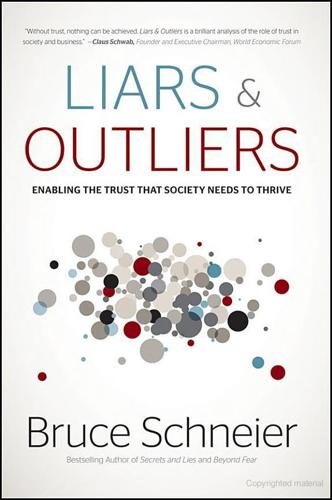
Liars and Outliers: How Security Holds Society Together
by
Bruce Schneier
Published 14 Feb 2012
The research is pretty clear on this point. The upshot, to paint with a broad brush, is that corporations' risk trade-offs are much more focused on making a financial profit than individuals' are.8 People are emotionally complicated, and will regularly forgo money in exchange for more subjective benefits. Corporations, because of their group nature, are simpler; they are far more likely to choose the more profitable trade-off. To take a familiar example, it's far easier for a chef/owner of a restaurant to forgo some profit to create the sort of restaurant that gives him the most creative satisfaction, while a corporate-owned restaurant chain will be more concerned about consistency and the bottom line.
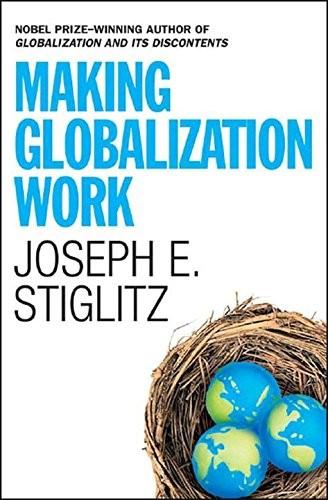
Making Globalization Work
by
Joseph E. Stiglitz
Published 16 Sep 2006
The question is how to ensure that developing countries get more benefits—and face fewer of the costs. In the following pages, I set out a five-pronged agenda that, though it will not eliminate all instances of corporate abuse, will I believe lessen them. Underlying most of these reforms is a simple objective: to align private incentives with social costs and benefits. Corporate social responsibility Though many corporations, especially in the United States, continue to argue that their sole responsibility is to shareholders, many do recognize that their responsibility goes further. There is an element of self-interest here: doing good can be good for business, and doing bad can subject companies to expensive lawsuits.
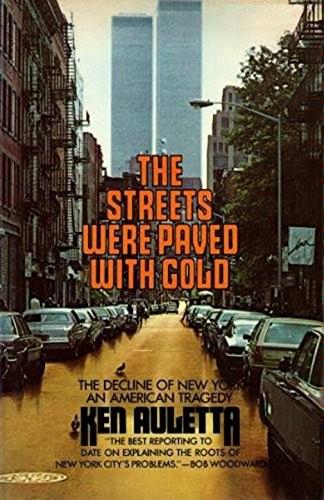
The Streets Were Paved With Gold
by
Ken Auletta
Published 14 Jul 1980
As the Municipal Assistance Corporation struggled to provide financing, over the first three years of the fiscal crisis the city’s debt grew almost 20 percent—from $12.3 billion in April 1975 to $14.2 billion in April 1978. This sum did not include the $753 million (as of February 28, 1978) that the City Comptroller says was owed for “debt-like commitments to public benefit corporations.” Despite fiscal progress, despite a dramatic reduction in short-term debt, despite assurances to the Congress and the public that in four years the horses would in fact fly, MAC board member Richard Ravitch told me that private MAC calculations—based on the city’s original four-year plan—projected that New York’s debt burden could swell to $16.5 billion in fiscal 1983.
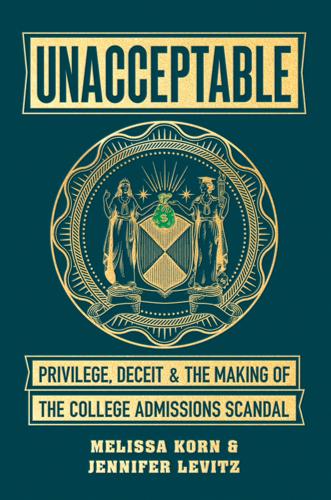
Unacceptable: Privilege, Deceit & the Making of the College Admissions Scandal
by
Melissa Korn
and
Jennifer Levitz
Published 20 Jul 2020
One especially fruitful approach was immersing himself in the world of charities, toward which many of those target parents gravitated. Singer talked to a friend, an attorney, who helped him prepare the paperwork for his own charity, and in December 2012 he established the Key Worldwide Foundation as a nonprofit public benefit corporation, registering it as a charity the following March. Singer would say years later that the purpose was to help disadvantaged kids, but that he then thought it could be a vehicle to accept bribe payments from parents to get their kids into college. He’d portray it as a win for all: the parent could write the payment off on their taxes as a donation, and he could help people.

Global Spin: The Corporate Assault on Environmentalism
by
Sharon Beder
Published 1 Jan 1997
(Lower taxes, they claim, will provide a greater incentive for the wealthy to invest in productive activities that will boost economic growth and provide more employment.)9 Conservative think-tanks also tend to oppose environmental reforms that threaten industry—this will be discussed further in the next chapter. For many corporations, the investments they make in think-tanks, which produce and market ideas that benefit corporate interests, are small change when compared with the hundreds of millions of dollars that they spend on advertising their products. Such investments are also considered to be more cost-effective than funding university researchers, who tend to be more concerned about peer review and academic quality and don’t seem to have, what John Hood, a ‘scholar’ with the Heritage Foundation, one of the leading US think-tanks, refers to as “a clear understanding of who their customers are”.10 Academic research can be full of jargon, and often goes no further than academic journals with a very small readership.

The Finance Curse: How Global Finance Is Making Us All Poorer
by
Nicholas Shaxson
Published 10 Oct 2018
What’s more, tax cuts often attract investment within years or even months, while the costs, such as a less well-educated population or crumbling infrastructure due to lower tax revenues, will play out over decades. Studies that measure this tend to underplay the costs of the tax cuts relative to their benefits. Corporate tax research is made more misleading still by the fact that the evidence that policymakers use very often includes mostly old or even ancient data sets. Amid public fury following the global financial crisis, governments have tightened up on corporate profit-shifting games, but the elasticities that economists measure in this arena are not the same as they were decades ago, so tax cuts are less effective now than they were back then.

The Quiet Coup: Neoliberalism and the Looting of America
by
Mehrsa Baradaran
Published 7 May 2024
One of the central terms in this story is “fusionism,” the idea, pioneered by right-wing intellectuals, that the modern right would incorporate libertarians, social conservatives, the religious right, and other groups that might otherwise be opposed to all the rest. It is easy to see, in retrospect, how that alliance has benefited corporations, the wealthy, and the powerful, but what have been the spoils for the religious right? The obvious answer is power, insofar as power is defined as the recognition of and priority given to the Christian right’s “moral concerns”—namely, the prohibition of abortion and the maintenance of firm boundaries regarding sex and gender.

The Best of 2600: A Hacker Odyssey
by
Emmanuel Goldstein
Published 28 Jul 2008
MEM: MetroCard Express Machine: MEMs are vending machines that accept only credit and debit. They are often located beside a batch of MVMs. MTA: Metropolitan Transportation Authority: A public benefit corporation of the State of New York responsible for implementing a unified mass transportation policy for New York City and counties within the “Transportation District.” NYCTA: New York City Transit Authority: Under the control of the MTA, the NYCTA is a public benefit corporation responsible for operating buses and subway trains in New York City. RFM: Reduced-Fare MetroCard: RFMs are available to the elderly or people with qualifying disabilities.

The Pot Book: A Complete Guide to Cannabis
by
Julie Holland
Published 22 Sep 2010
He is the author or coauthor of dozens of peer-reviewed scientific articles in the area of neuropsychopharmacology, coauthor of the textbook Drugs, Society, and Human Behavior (New York: McGraw-Hill, 2009), and a member of a National Institutes of Health (NIH) review group. He can be contacted at clh42@columbia.edu. Jeffrey Hergenrather, M.D., is president of the Society of Cannabis Clinicians (SCC), a project of the California Cannabis Research Medical Group, a nonprofit public benefit corporation whose mission includes collecting and reporting data associated with the medical conditions for which cannabis provides relief. SCC physicians meet quarterly to share their findings in the field of cannabinoid medicine. He can be contacted at jeff@trashtalk.net. Julie Holland, M.D., is assistant clinical professor of psychiatry at New York University School of Medicine.
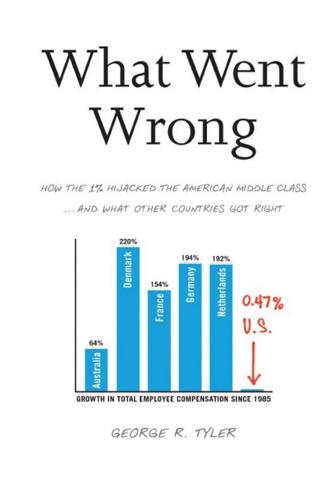
What Went Wrong: How the 1% Hijacked the American Middle Class . . . And What Other Countries Got Right
by
George R. Tyler
Published 15 Jul 2013
Stancata, Stephane Cote, Rodolfo Mendoza-Denton, and Dacher Keltner, “Higher Social Class Predicts Increased Unethical Behavior,” Proceeds of the National Academy of Sciences, February 27, 2012. 15 For example, see: Randall Morck, Andrie Shleifer, and Robert Vishny, “Alternative Mechanisms for Corporate Control,” American Economic Review, 1989, 79:842–852. 16 Ian Austen, “Shake-Up at Canadian Pacific Railway As Activist Investor Takes Control,” New York Times, May 18, 2012. 17 Peter Whoriskey, “The Lake Wobegon Effect Lifts CEO’s Pay,” Washington Post, Oct. 4, 2011, and Ryan Chittum, “Cronyism and Executive Compensation,” The Audit, Columbia Journalism Review, Oct. 4, 2011. 18 Whoriskey, Ibid. 19 Heather Landy, “Executives Took, But the Directors Gave,” New York Times, April 5, 2009. 20 David Cay Johnston, Perfectly Legal, 2003, 250. 21 David Carr, “Why Not Occupy Newsrooms?,” New York Times, Oct. 24, 2011. 22 Executive Viewpoints on Employee Benefits, “Corporate Director Compensation Grew Modestly in 2008,” Liberty Publishing vol. 52, no. 11, 2009. 23 John Gillespie and David Zweig, Money for Nothing, 2. 24 Steven M. Davidoff, Dealbook, “On Boards, Little Cause of Anxiety,” New York Times, Aug. 3, 2011. 25 John Gillespie and David Zweig, Money for Nothing, 82. 26 Jeremy W.

City for Sale: The Transformation of San Francisco
by
Chester W. Hartman
and
Sarah Carnochan
Published 15 Feb 2002
And since the late eighties, as might be expected from San Franciscans, there have been innumerable proposals and “plans,” for everything from a new University of California campus to an aviation museum, an environmental education center, a YMCA, an Housing Crisis and Housing Movement / 385 arts community, a conference center, luxury housing, low-rent housing, a massive golf course, an AIDS sanctuary and treatment center, and a facility for sheltering the homeless.193 The planning process for Presidio reuse began as early as 1990, with a series of public hearings convened by the National Park Service (and in fact some buildings were turned over to the GGNRA several years before formal base transfer).194 In the subsequent decade, controversy was rife—beyond specific reuse plans—over such fundamental issues as finances, historic preservation, what it means to have a national park within a city, citizen participation/decision-making authority, and congressional politics. The Presidio Trust (a public benefit corporation, in partnership with the National Park Service) was created by the Republican-controlled Congress in 1996, and in April 1997 President Clinton appointed seven persons to govern reuse of 80 percent of the former base.195 The Trust has vast powers, including authority to borrow from the U.S. Treasury and provide loan guarantees to encourage private sector investment.
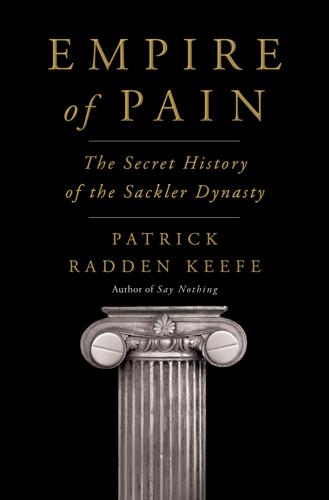
Empire of Pain: The Secret History of the Sackler Dynasty
by
Patrick Radden Keefe
Published 12 Apr 2021
Nearly a century earlier, during the height of the Depression, Isaac Sackler told his three sons that if you lose a fortune, you can always earn another, but if you lose your good name, you can never recover it. Sounding very much like Isaac Sackler, Maura Healey concluded, “They can’t buy their reputations back.” One odd feature of the DOJ resolution was that it endorsed the Sacklers’ bid to turn Purdue into a so-called public-benefit corporation, which would continue to sell opioids but distribute the proceeds to the states so they could fight the opioid crisis. None of the public commentary made note of it, but there was irony in the Sacklers proposing that Purdue be turned into a charitable trust. Back in the 1940s, on a snowy street corner in New York, Arthur, Mortimer, and Raymond had made a pact with their best friend, Bill Frohlich.

The power broker : Robert Moses and the fall of New York
by
Caro, Robert A
Published 14 Apr 1975
Given the geographical location of New York City, that state could only be New Jersey—and in the portion of New Jersey closest to New York, the highway-building power was the Port Authority. There were additional incentives for rapprochement. Since O'Dwyer had handed it Idlewild in 1946, every ensuing confrontation between the two giant "public benefit corporations" had resulted in a Moses victory; during the reign of Impy, in fact, he had forced the Port Authority to agree to reserve $13,000,000 for his Mid-Manhattan Expressway as the price for permission to enlarge the Lincoln Tunnel. But the situation had changed. Wagner Junior ("For a man who's been a friend of your father's, you have ... a sense of humility, of respect") had just become mayor, and the Port Authority's chairman had been one of his father's closest friends, campaign treasurer for his 1926 senatorial race, in fact.